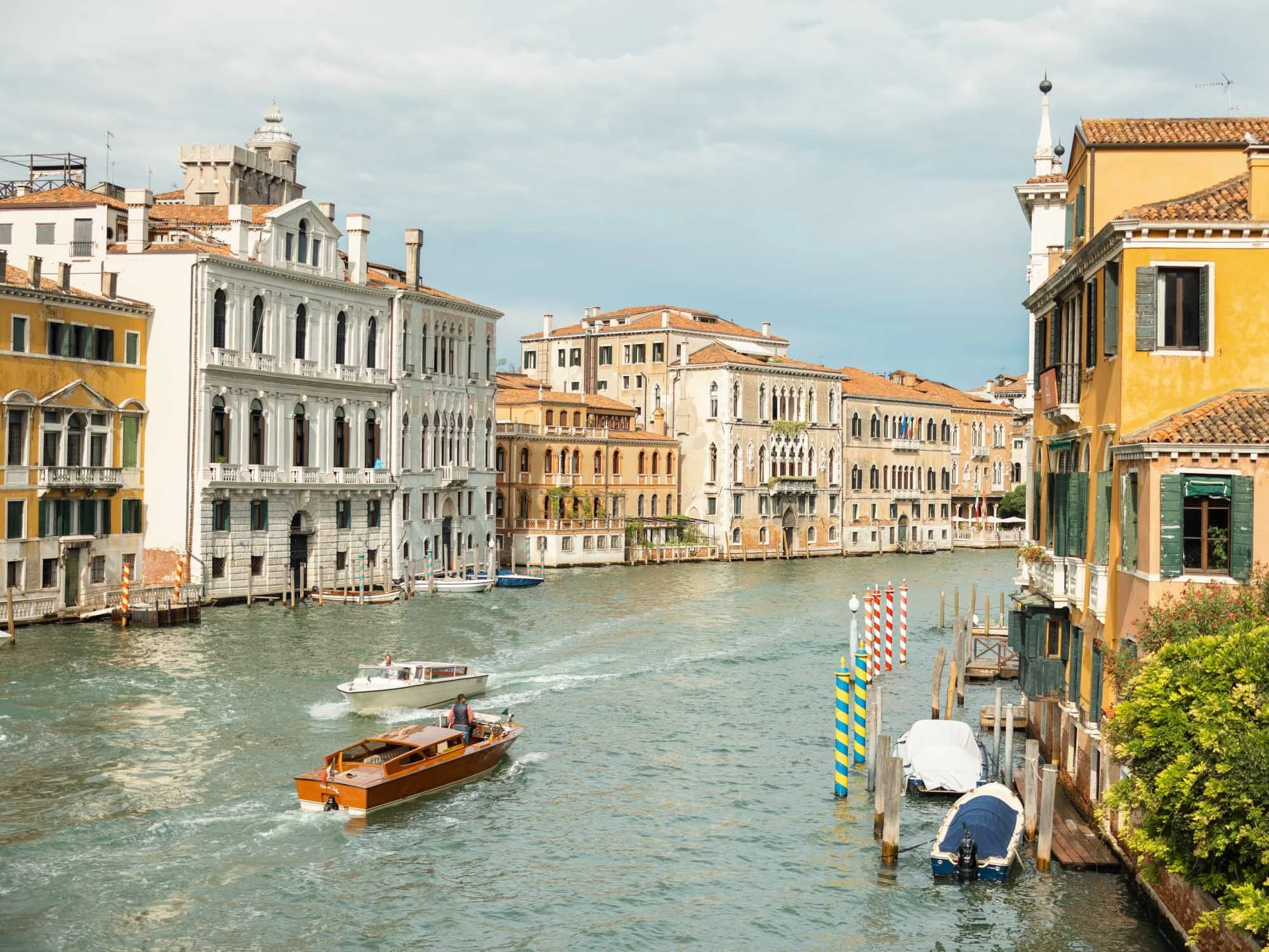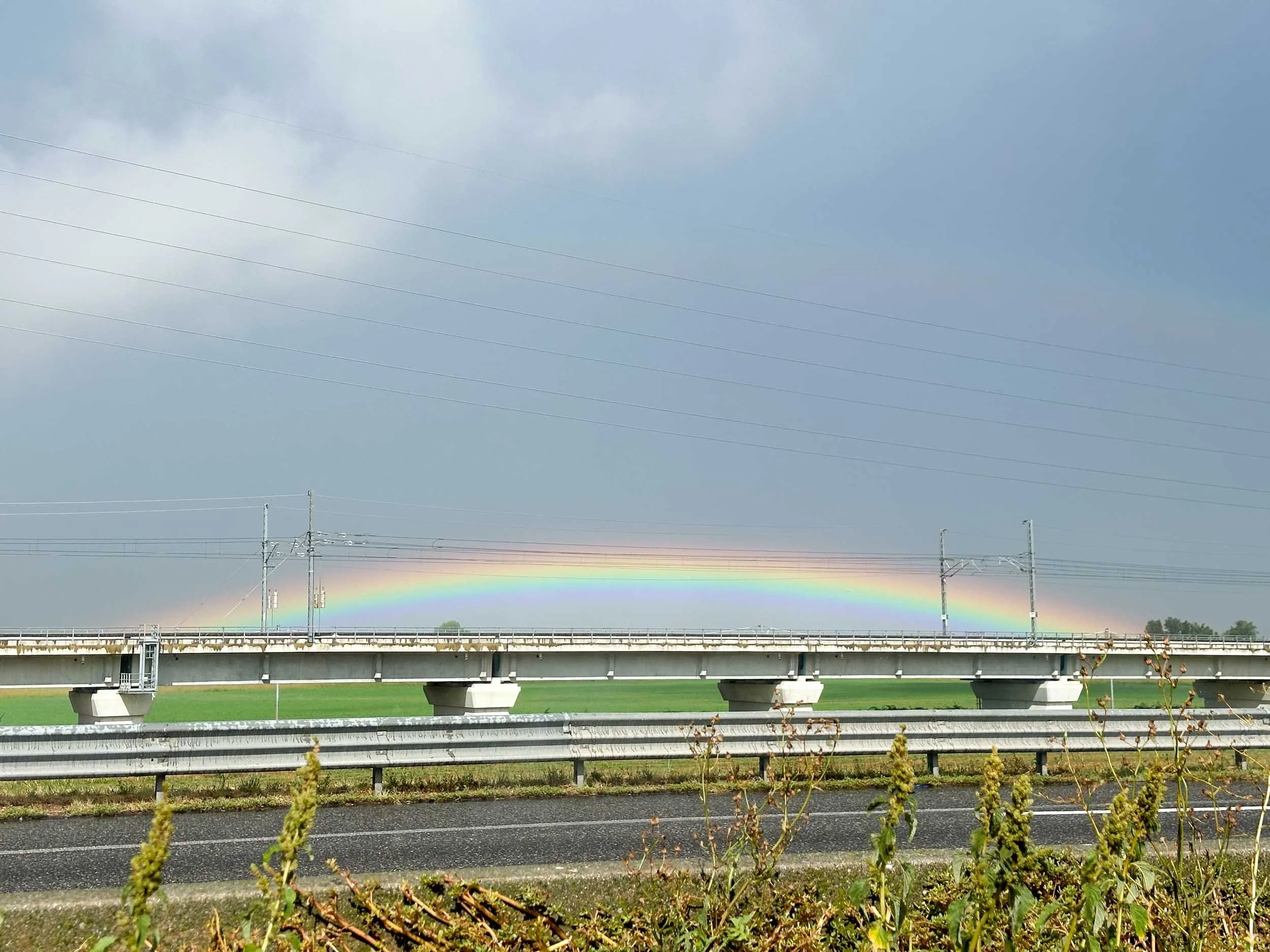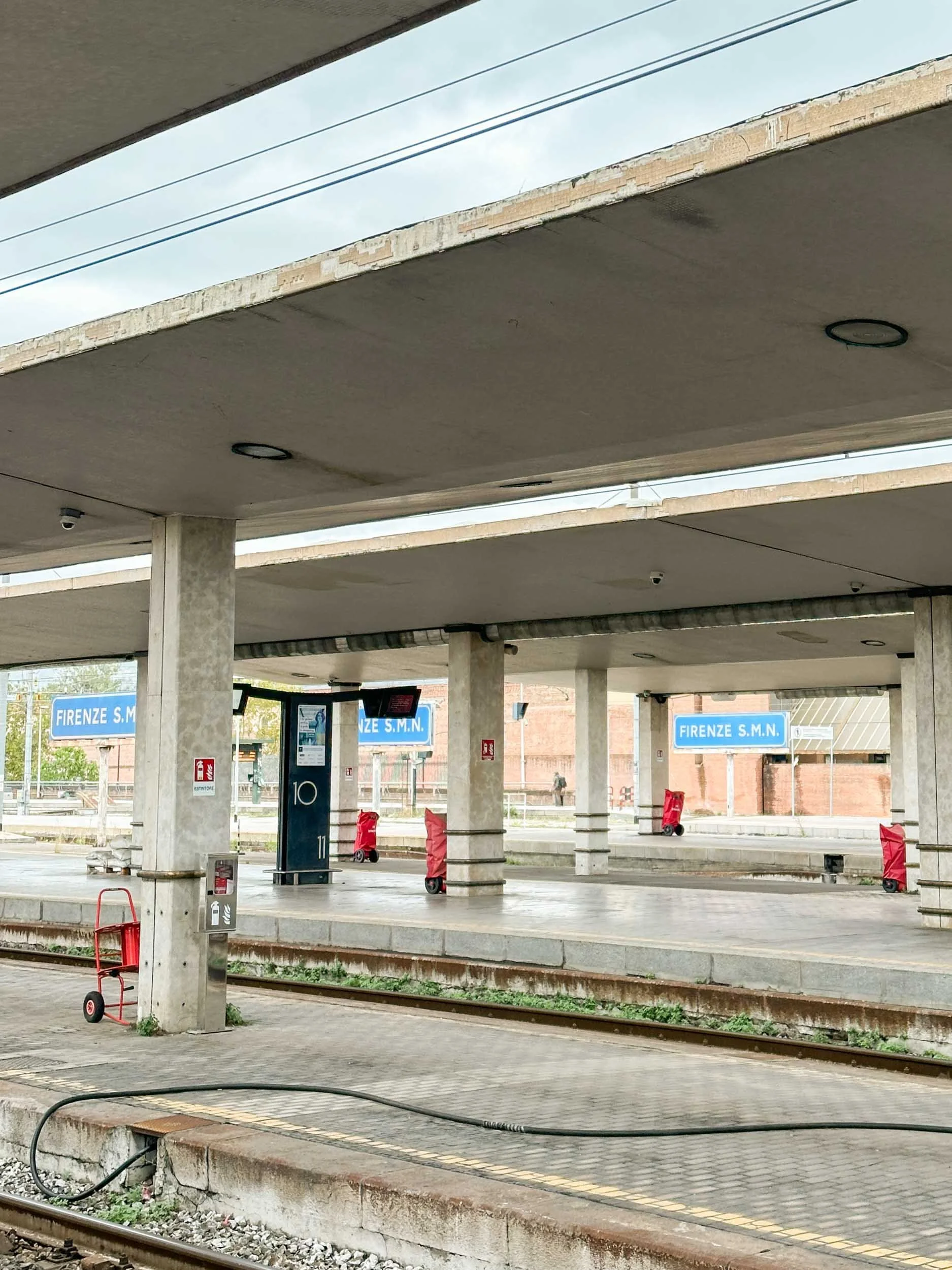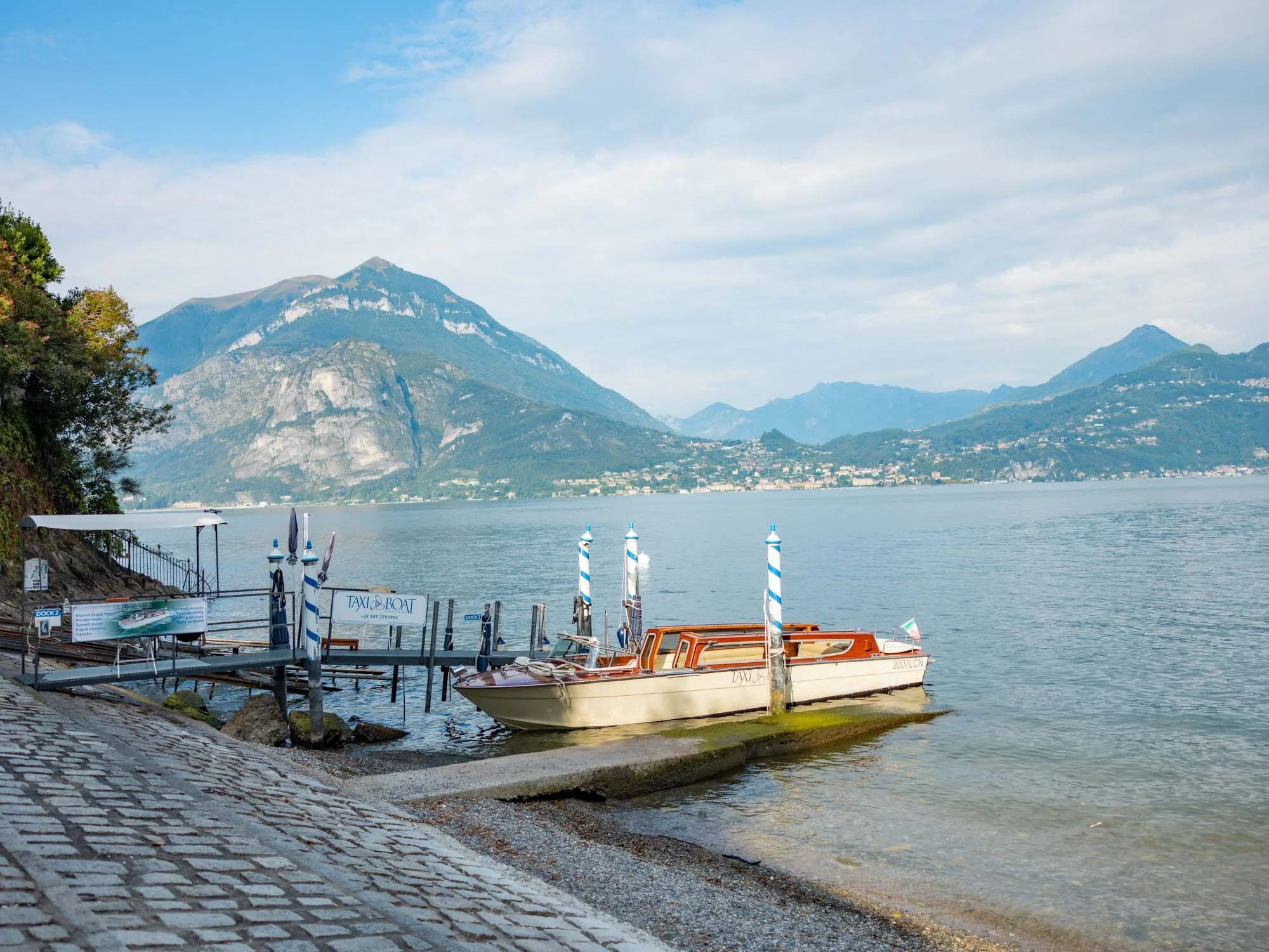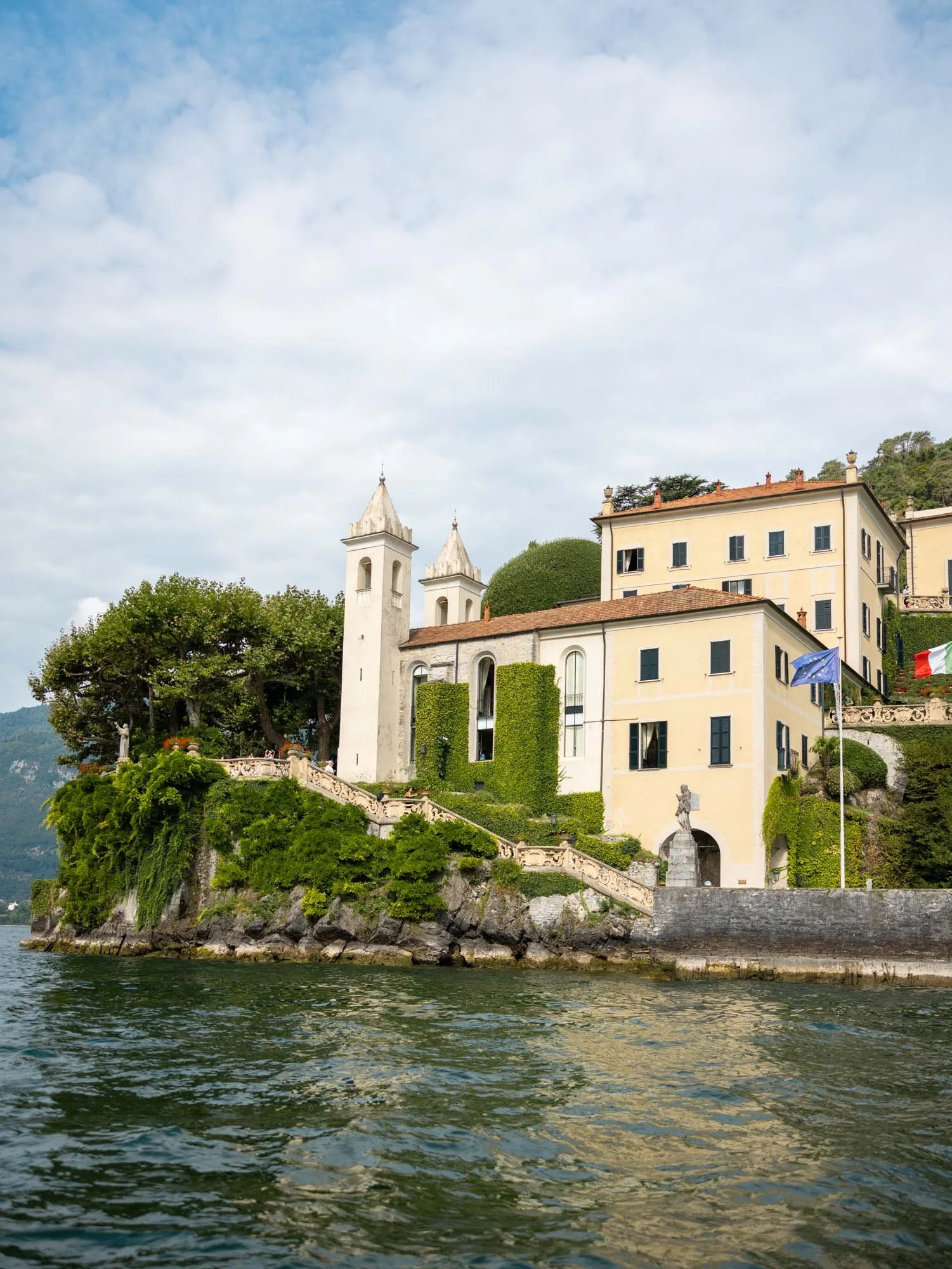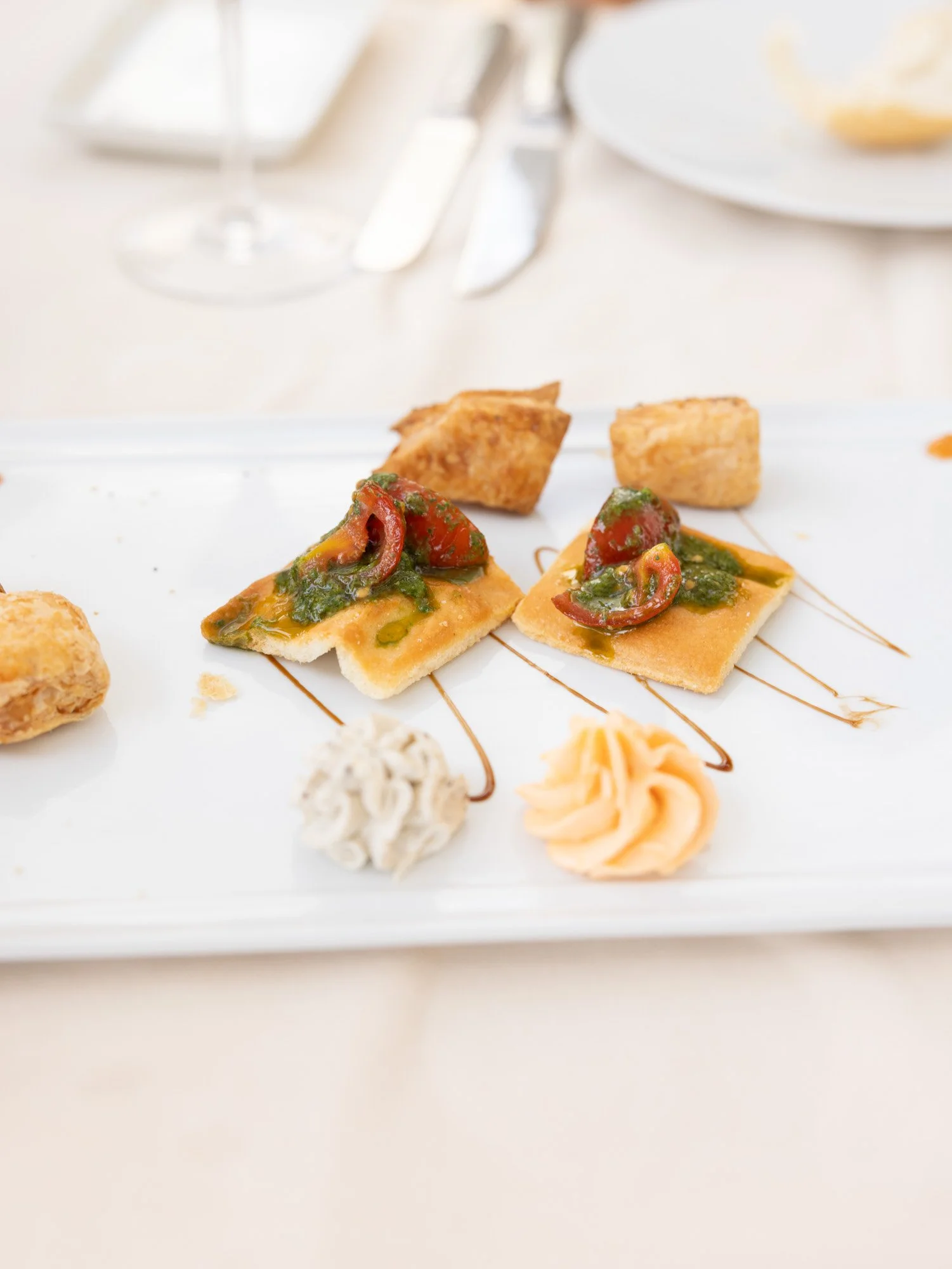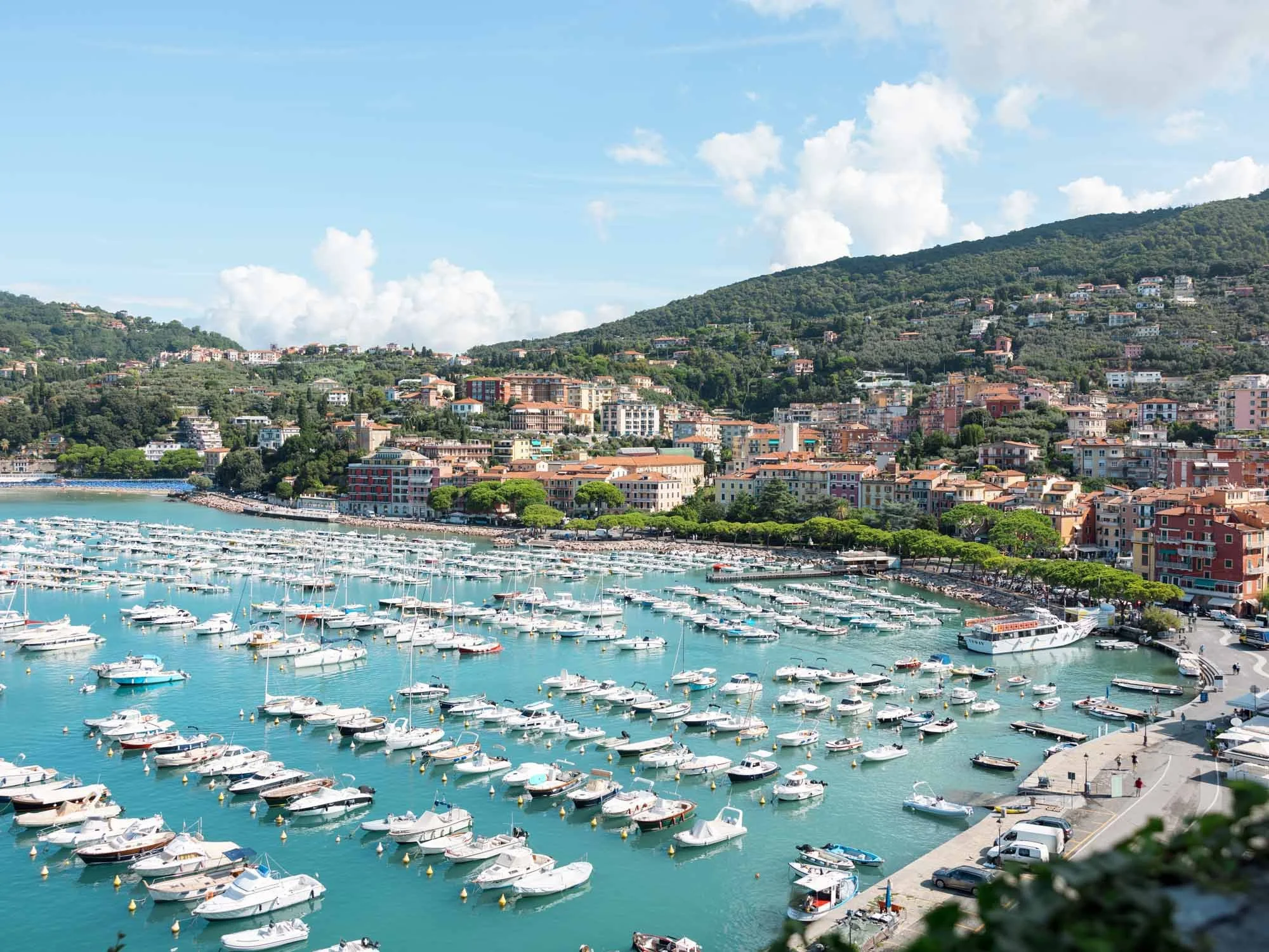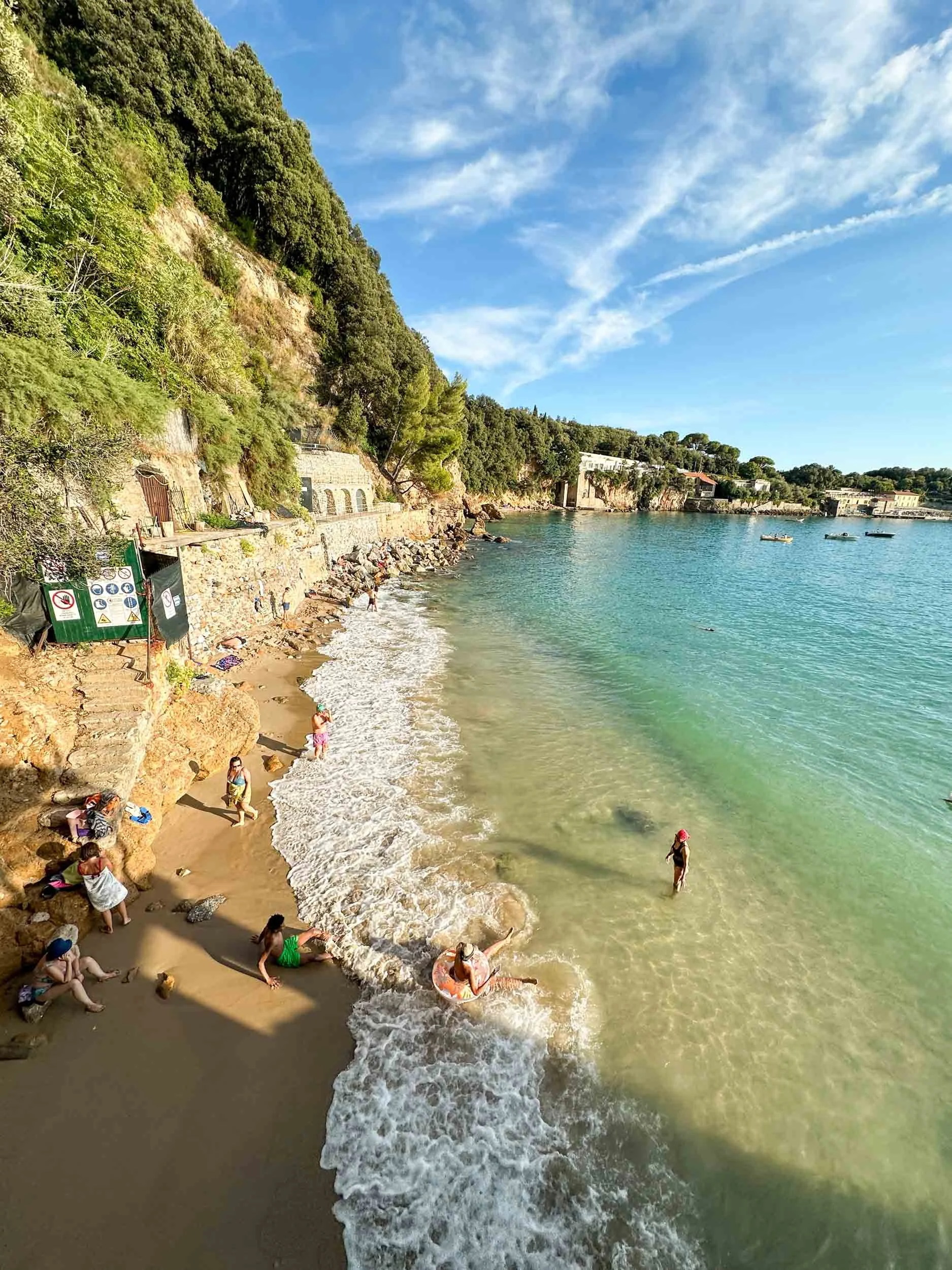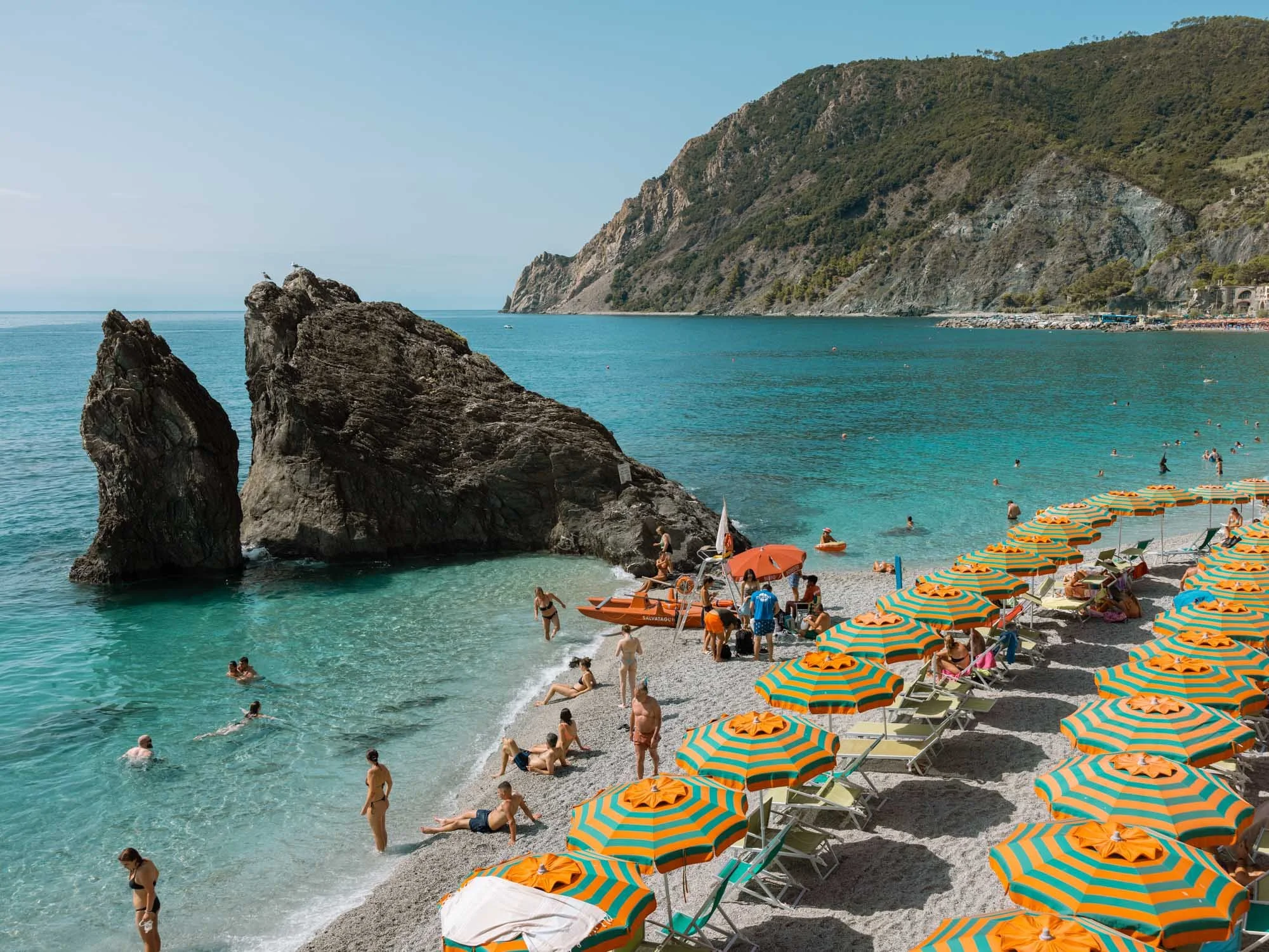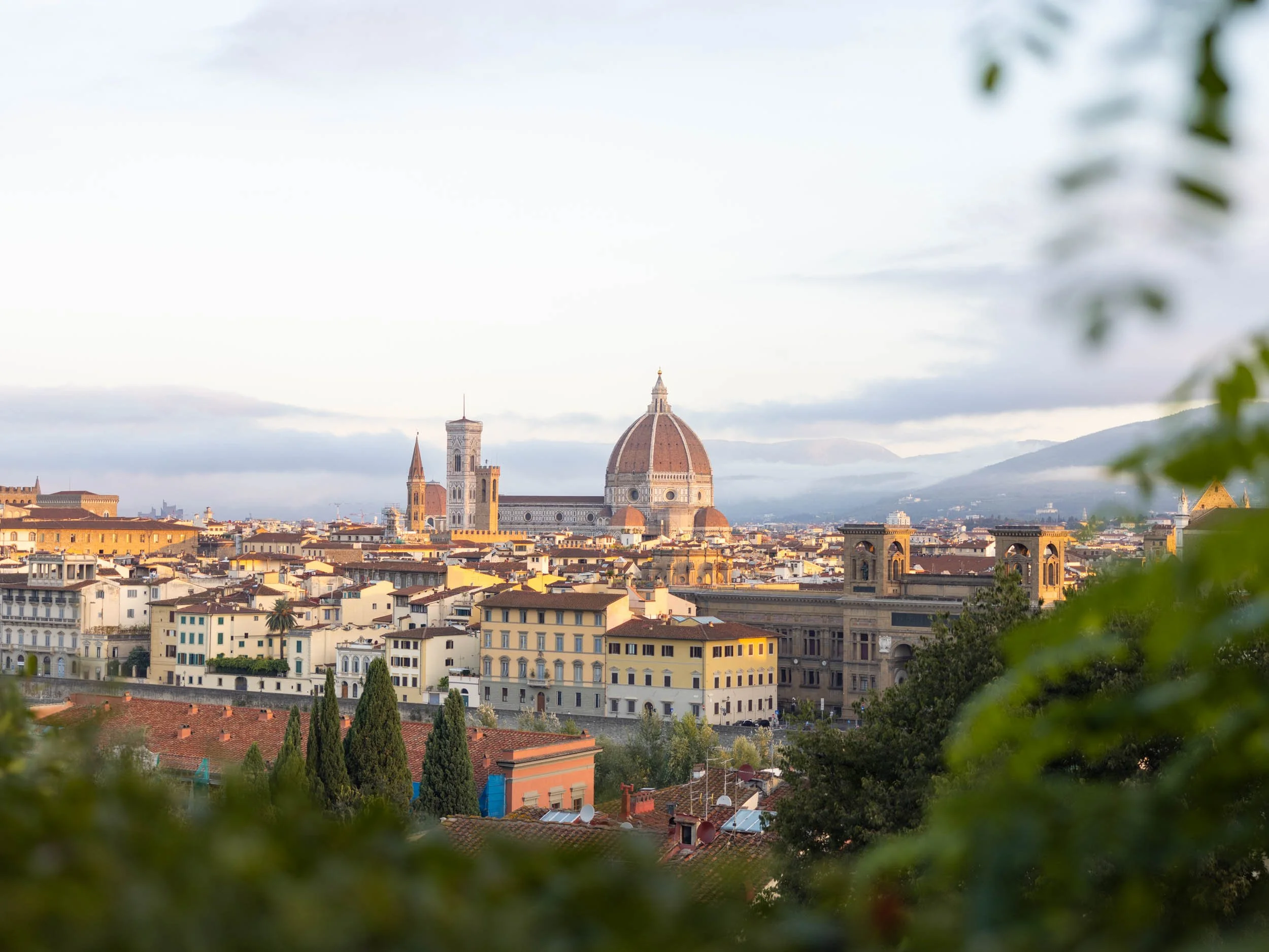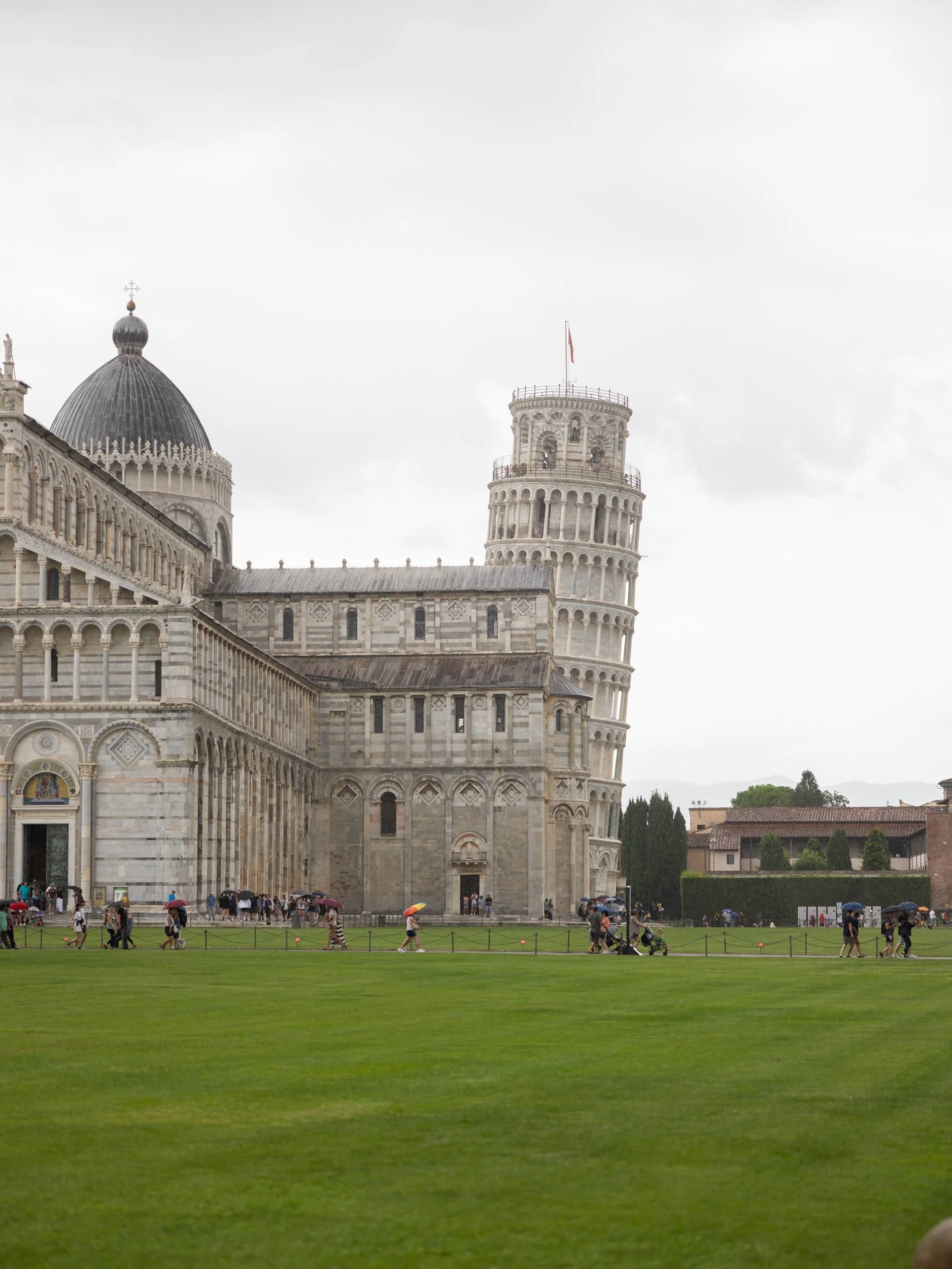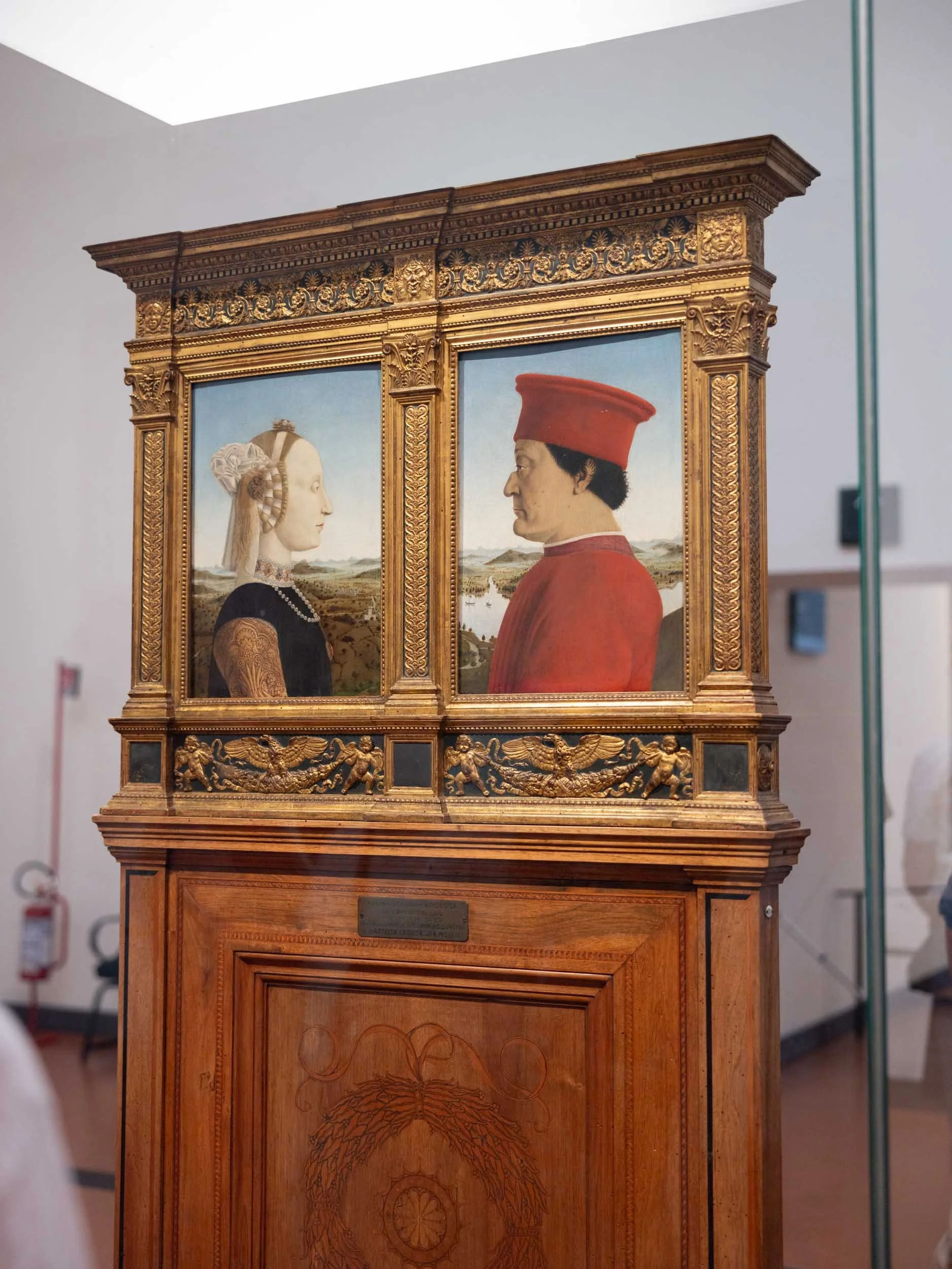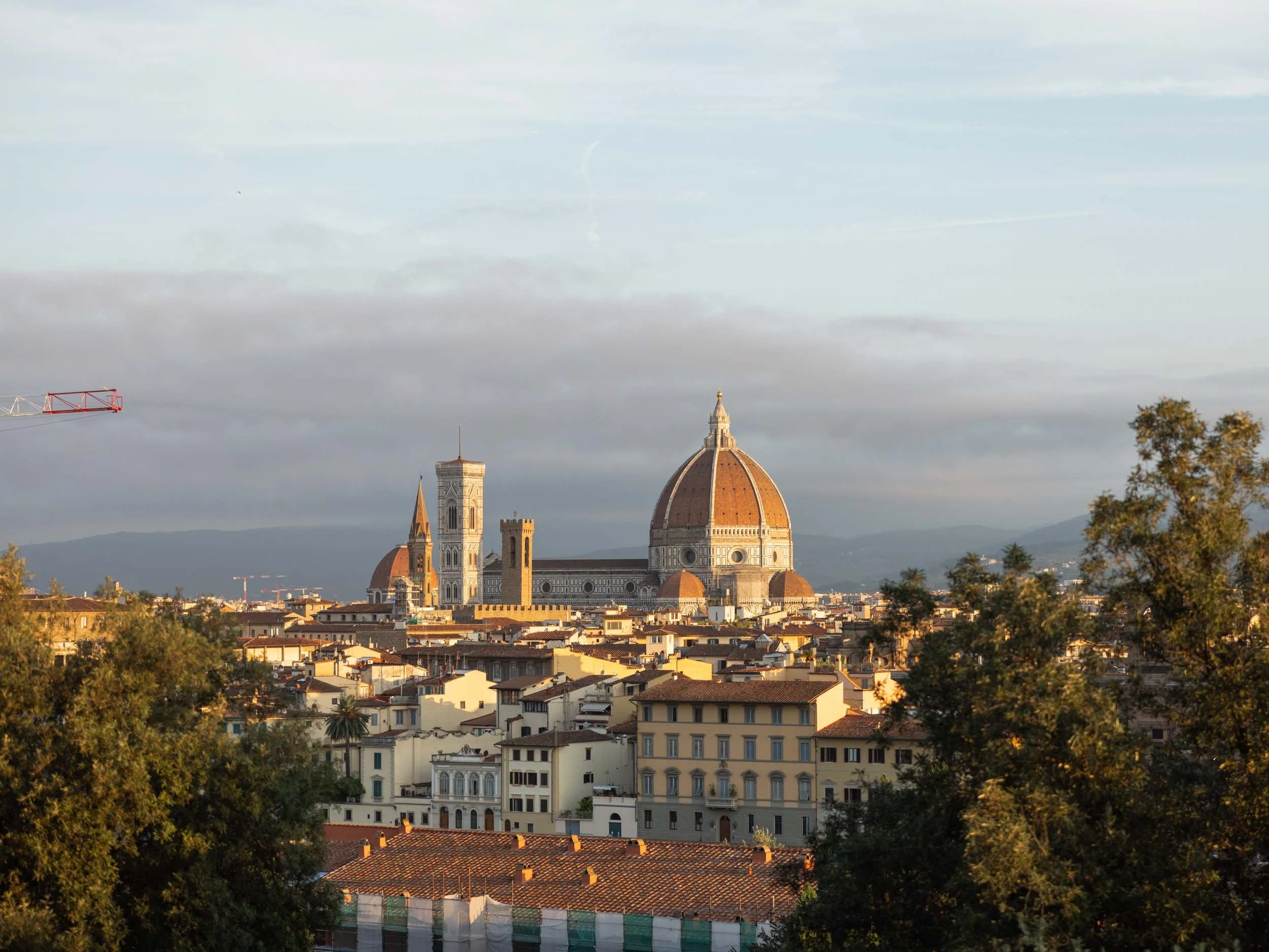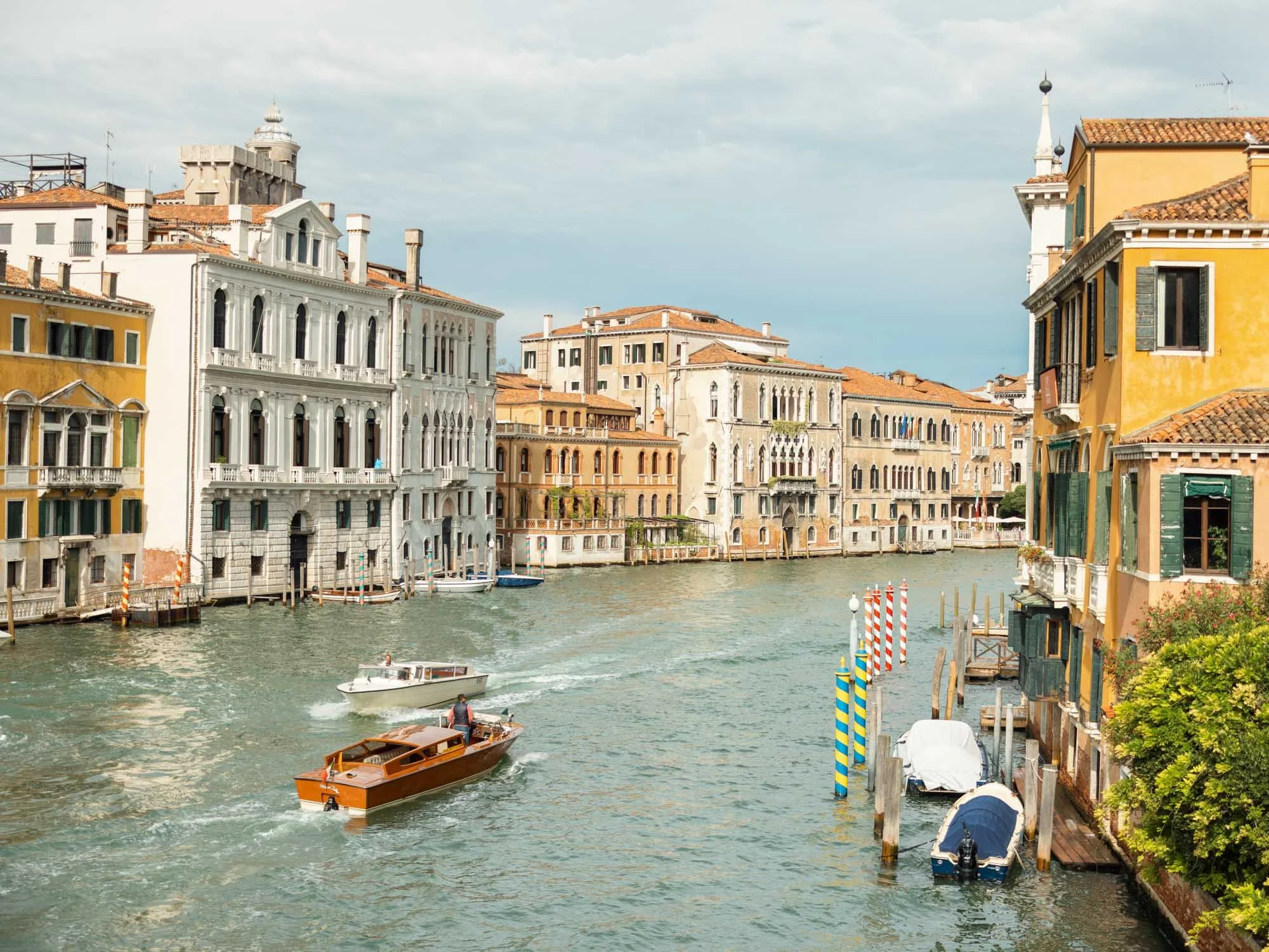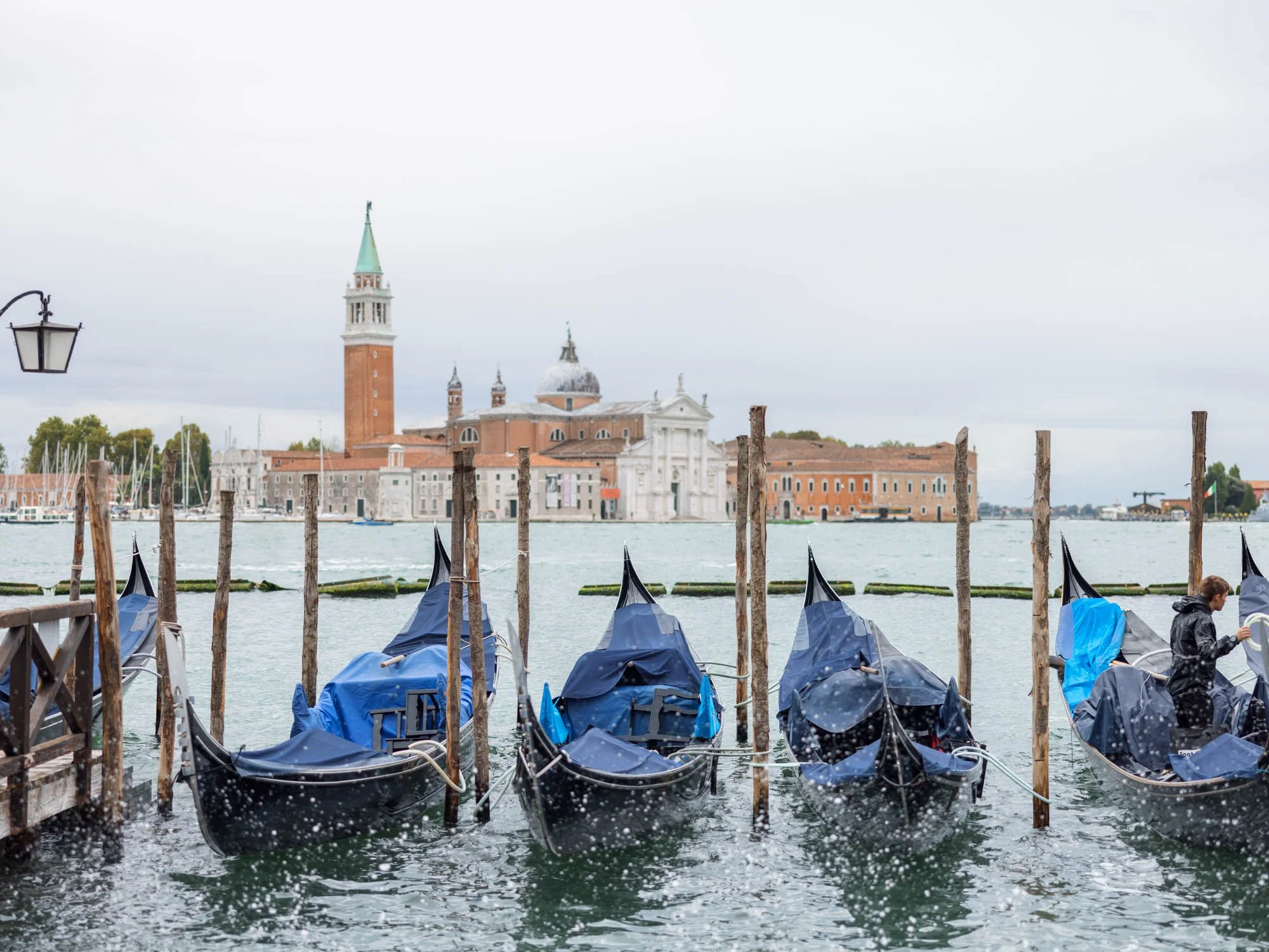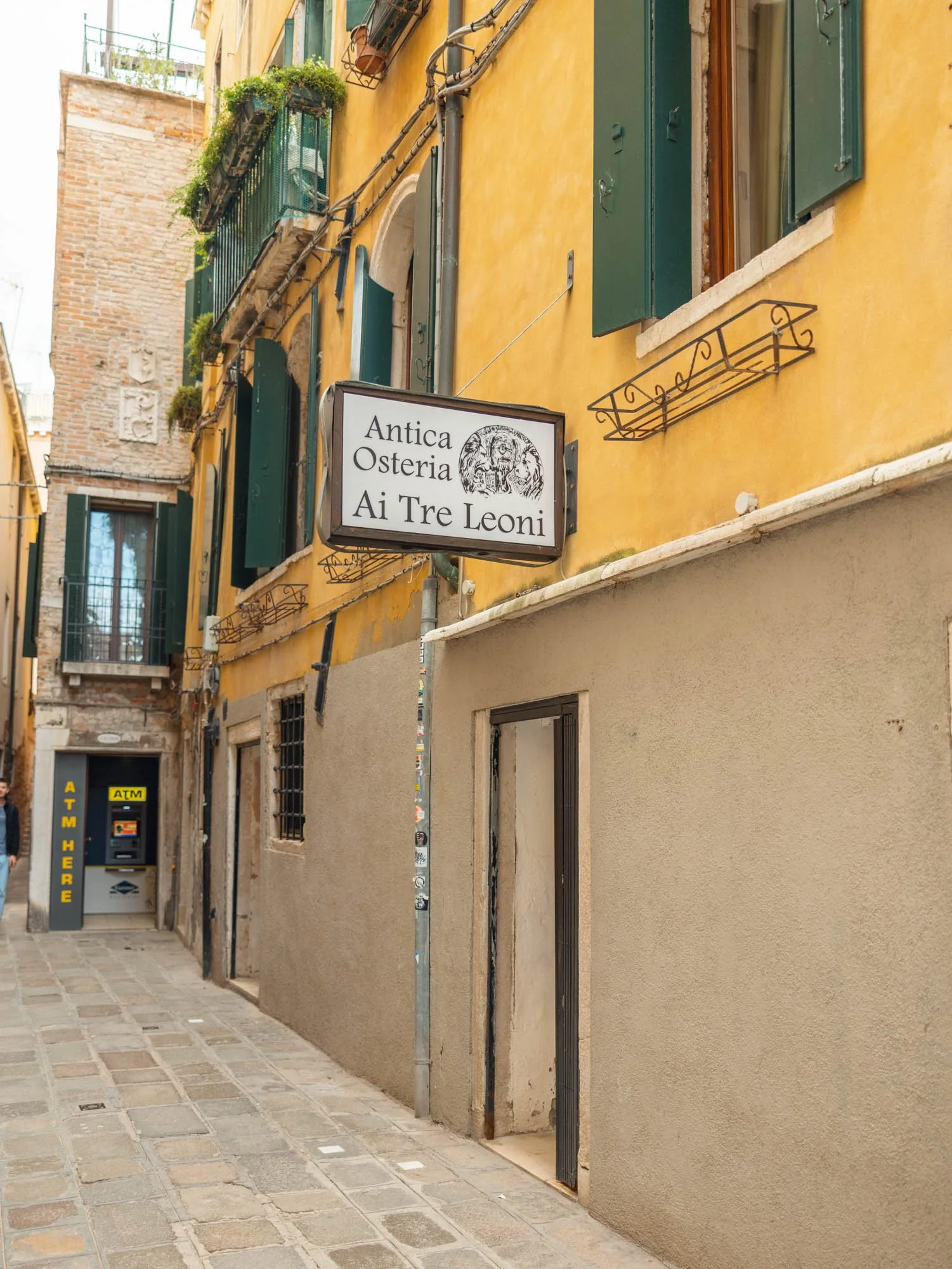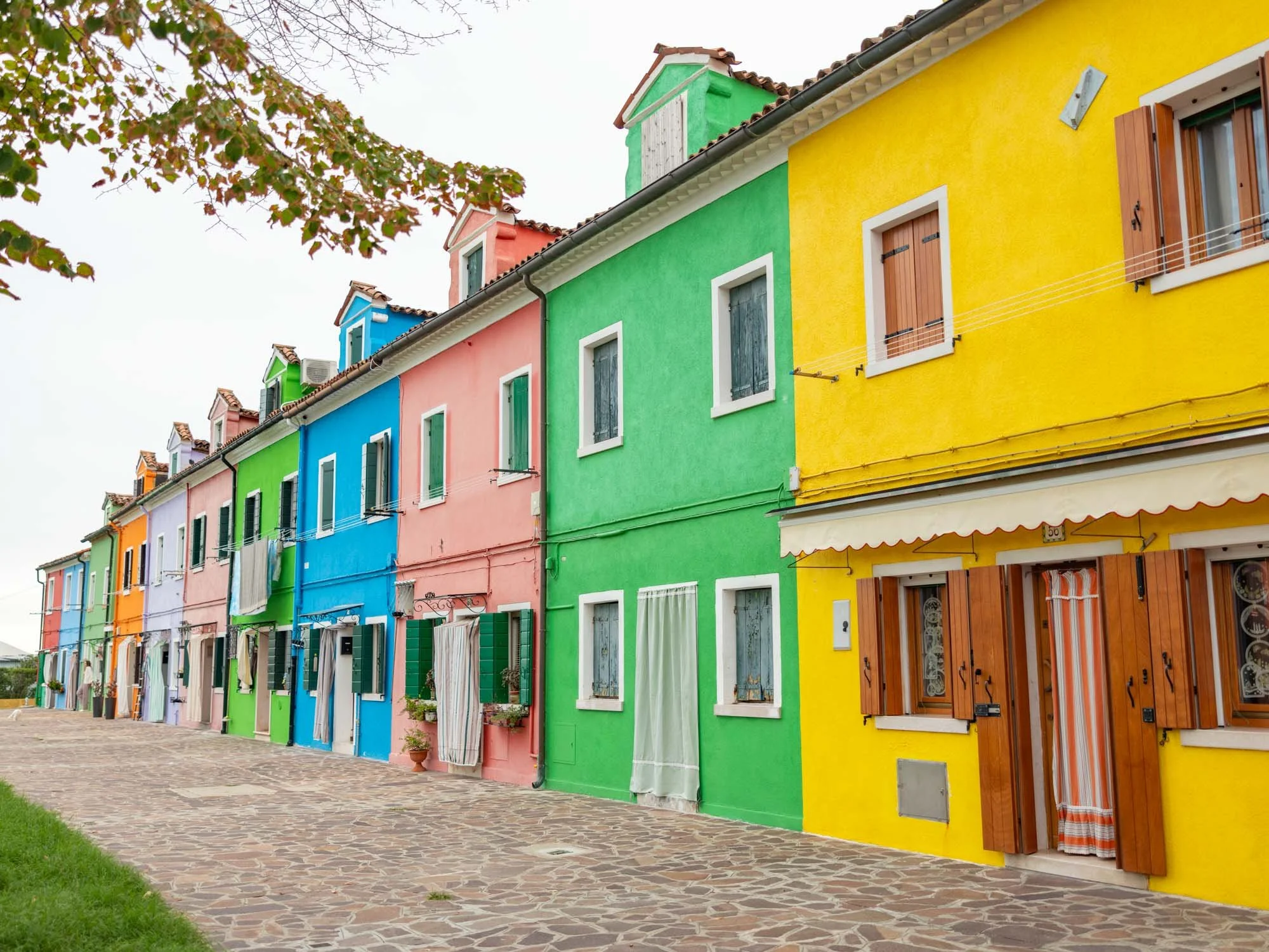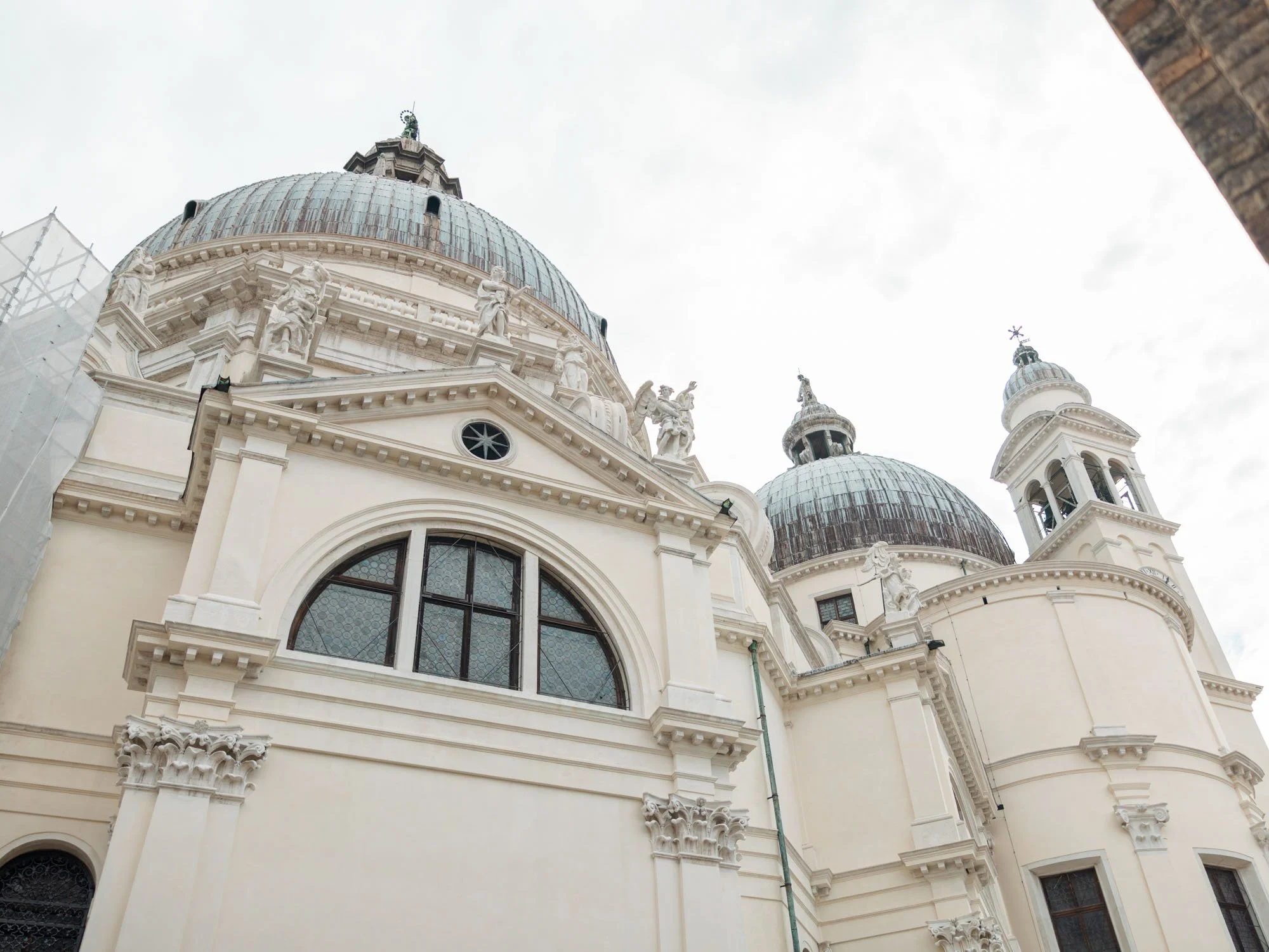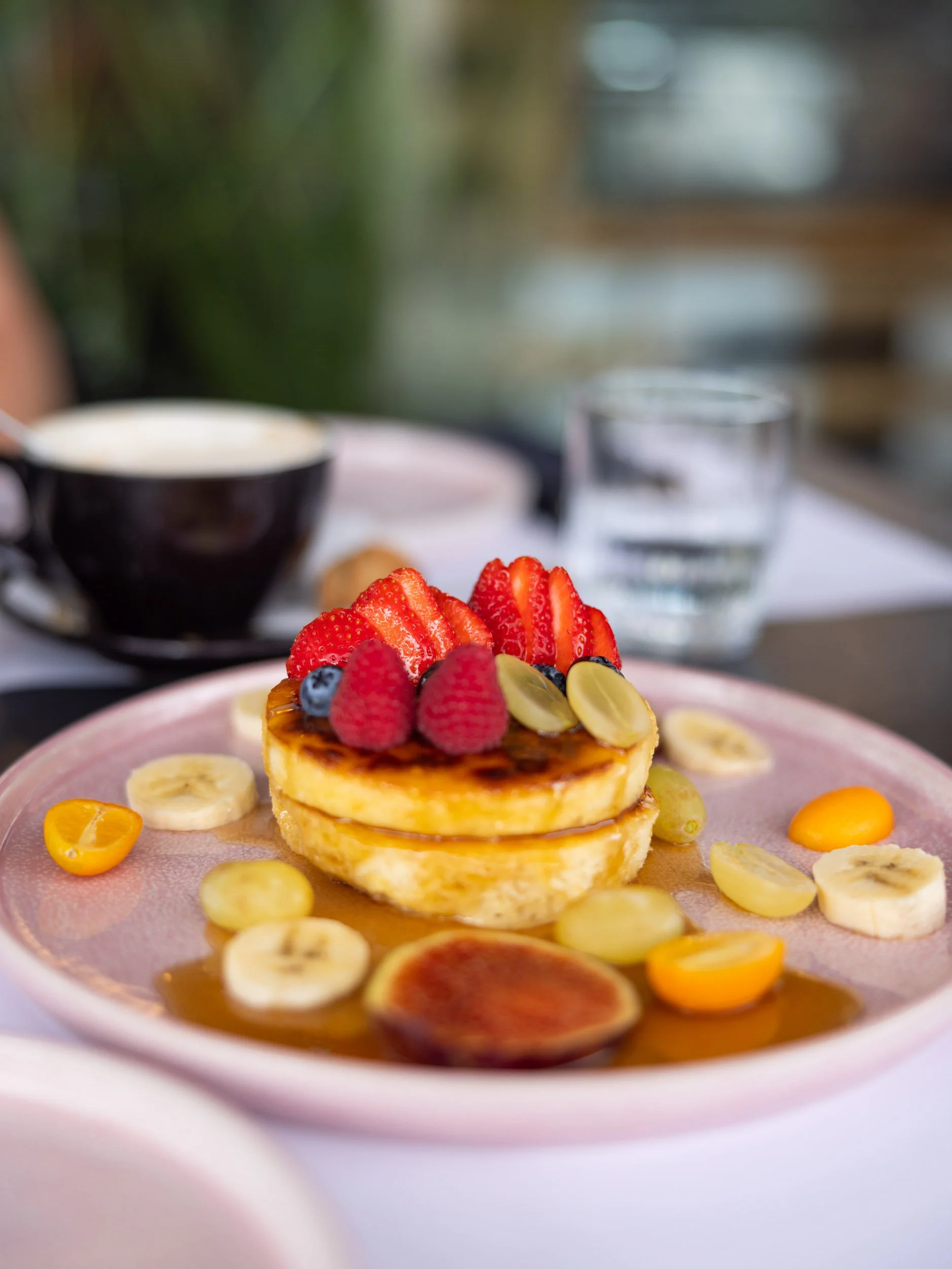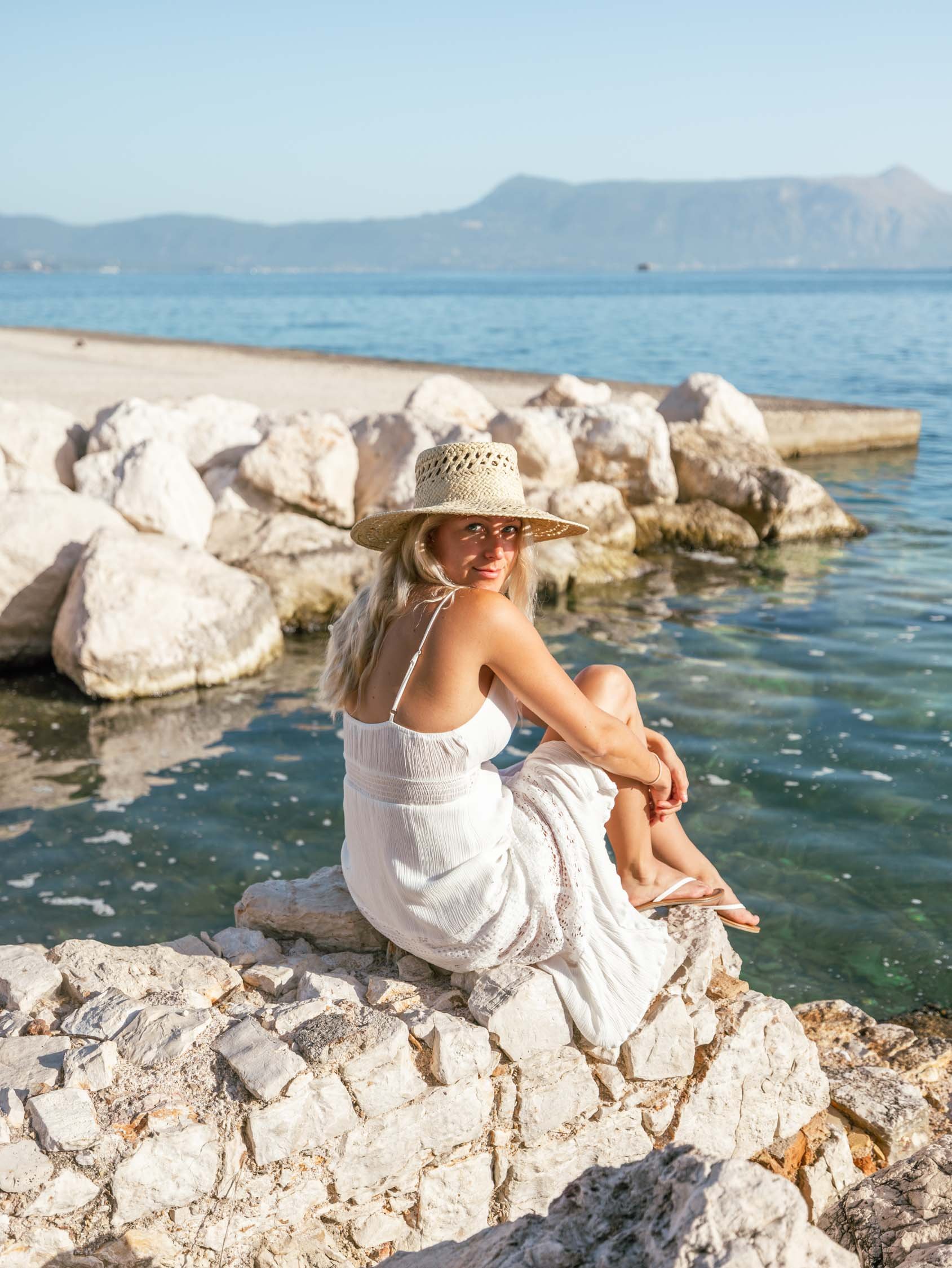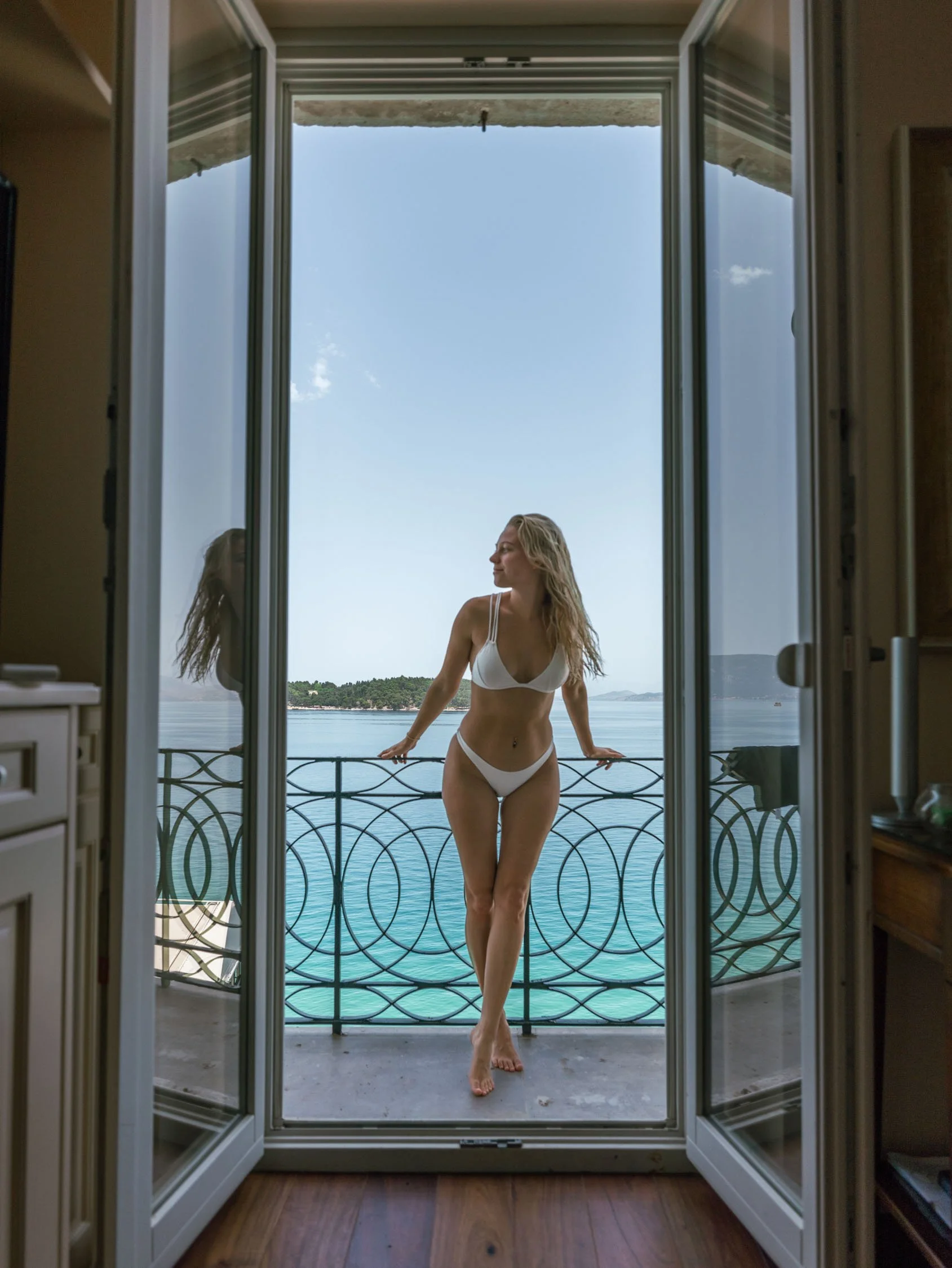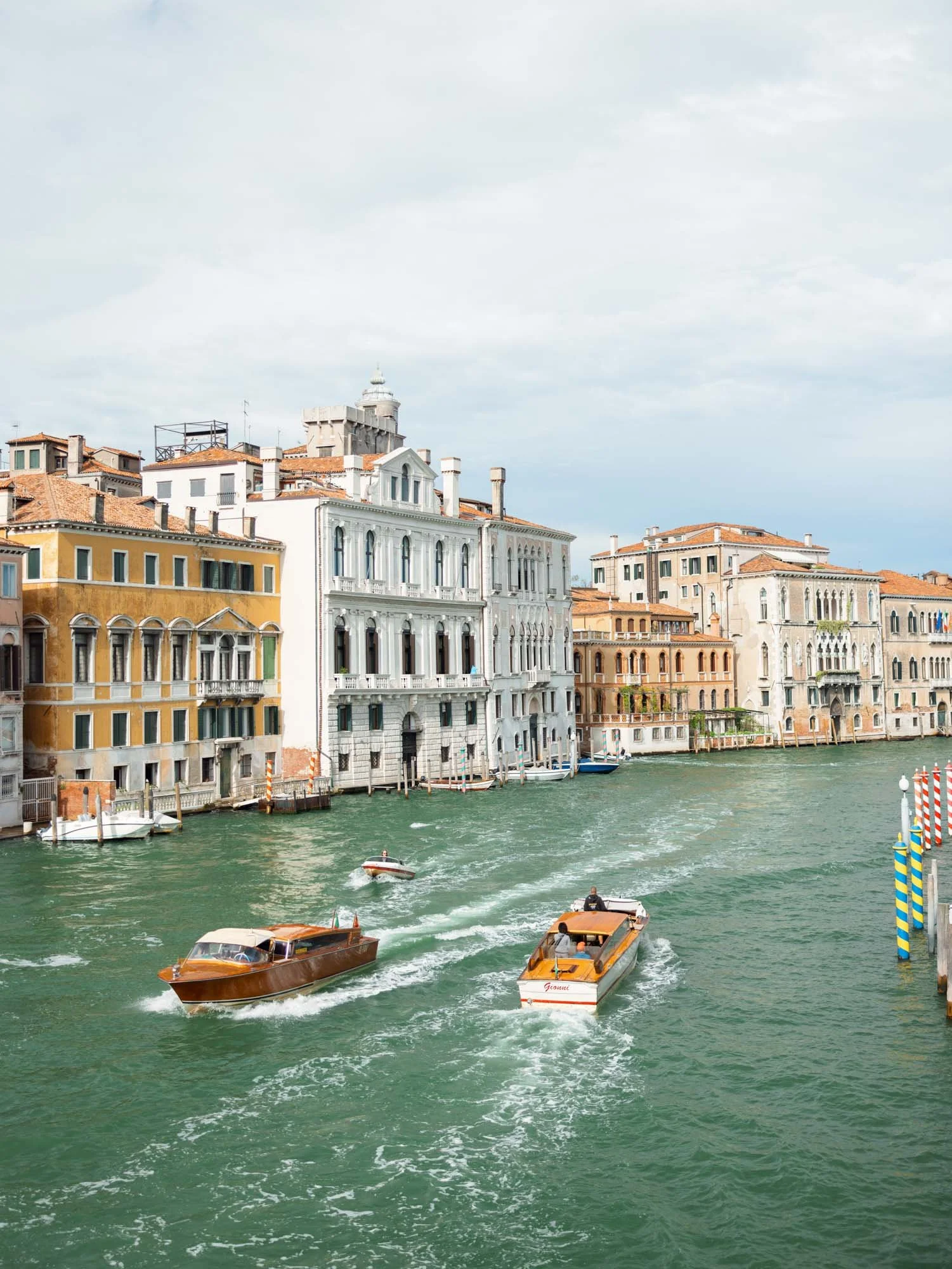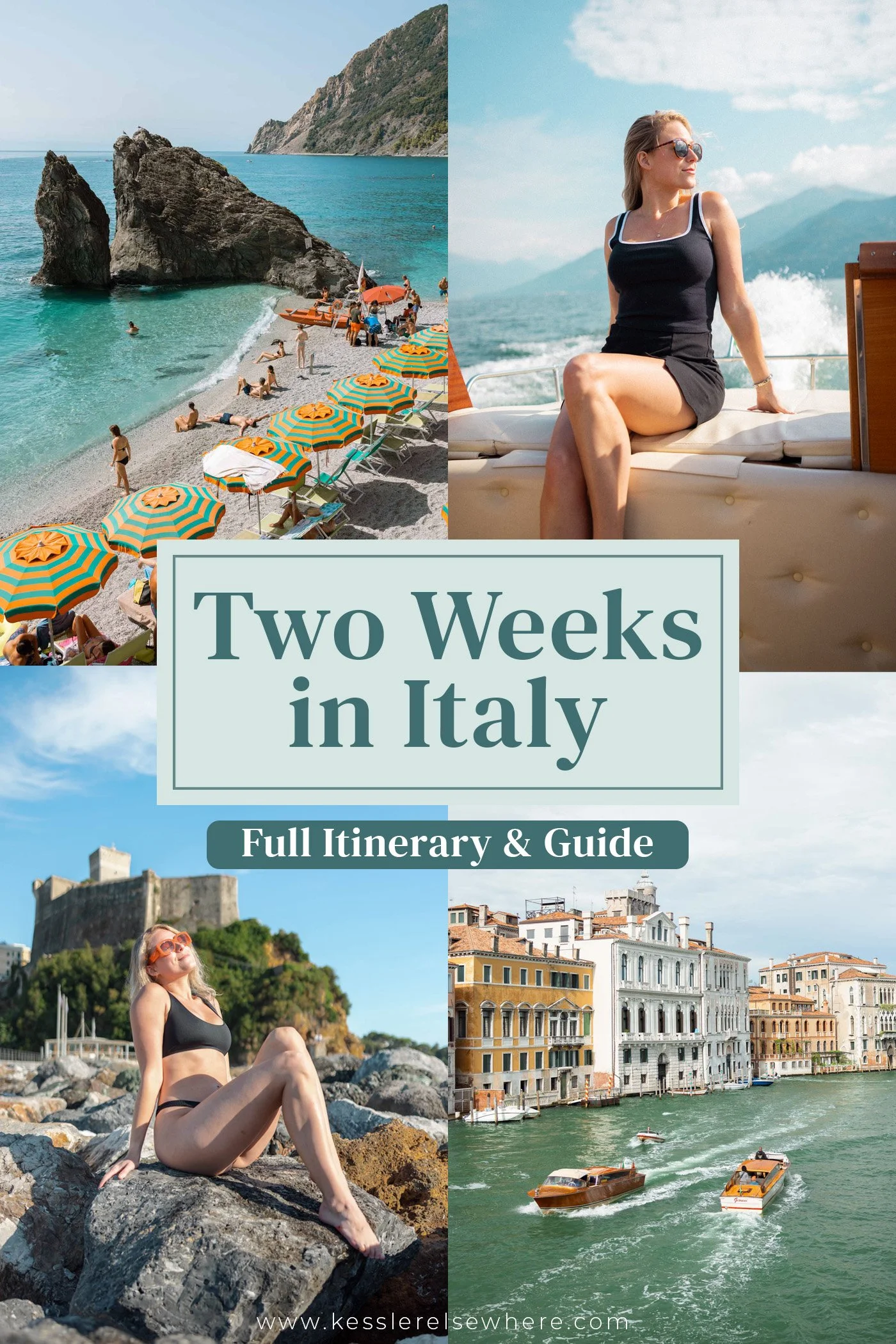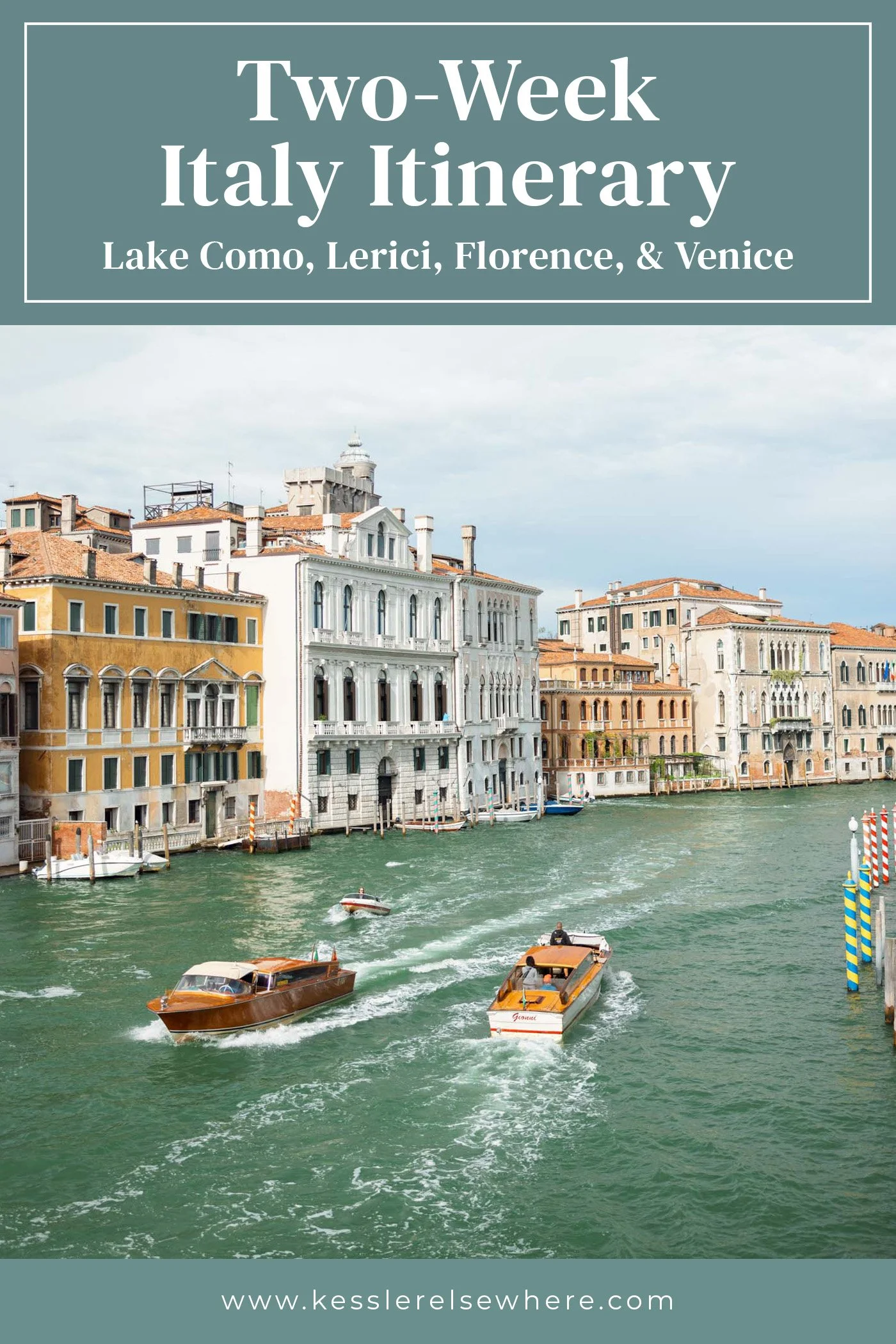Two Weeks in Italy: Full Itinerary & Guide
Spending two weeks in Italy is an ideal length of time to visit a few of the best destinations in the country.
Though there are dozens of gorgeous cities and small towns to choose from, this two-week Italy itinerary covers four main destinations in four different regions in Northern Italy: Lake Como, Lerici, Florence, and Venice. There are a few day trips as well to Cinque Terre, Pisa, and the Tuscany countryside!
Each region of Italy has its own subculture, specialties, and landscape. You can go from the sparkling, colorful coastline in Liguria to the rolling green hills in Tuscany and feel like you’ve traveled between two completely different countries.
Our two weeks in Italy were a mix of self-guided exploration, ticketed visits to museums, guided boat tours, and everything in between. It felt like the perfect combination of everything and I’ve carried that into this itinerary.
I’ve poured all the information I gathered during our two weeks in Italy into this post. In addition to a guide and detailed two-week Italy itinerary, there are also 10 tips for visiting Italy at the very end!
This post contains affiliate links that earn me a commission. For more information, read my disclaimer.
Ideal Two-Week Italy Itinerary
Lake Como (2 nights)
Day 1: Arrive in Milan and travel to Lake Como
Day 2: Full Day in Lake Como
Lerici & Cinque Terre (3 nights)
Day 3: Travel from Lake Como to Lerici
Day 4: Full Day in Lerici
Day 5: Day Trip to Cinque Terre
Florence (4 nights)
Day 6: Travel from Lerici to Florence
Day 7: Full day in Florence
Day 8: Tuscany Wine & Lunch Tour
Day 9: Full day in Florence
Venice (4 nights)
Day 10: Travel from Florence to Venice
Day 11: Full Day in Venice
Day 12: Half-day trip from Venice to Burano
Day 13: Full Day in Venice
Day 14: Fly home or to your next destination
Best Time to Visit Italy
With most Mediterranean countries, the months before and after summer are the best time to visit Italy. May, early June, September, and October are my favorite times to travel in Europe.
The weather is nice, there are fewer crowds than the busy summer months, and the restaurants and activities that close seasonally are usually open.
All the photos in this guide are from our two weeks in Italy in September. While we experienced warm, gorgeous weather many days, we also had unusual rain and thunderstorms a few of the days. Lesson learned: always bring a travel umbrella.
Winter is the least ideal time to visit Italy as many restaurants close completely for the whole season. Especially in areas that see heavy tourism during the busy seasons, they become ghost towns in winter.
How to Get Around Italy
Should you rent a car in Italy?
The short answer is yes, I think you should rent a car for this particular two-week Italy itinerary for ease of travel. A car is not required to get around Italy.
The long answer is that renting a car for the first part of this itinerary makes your travel times shorter and it is easier to get around than if you had to take trains and buses.
It also lets you see areas of the country you wouldn’t ordinarily see! We saw all kinds of interesting areas and even got a vibrant rainbow on a rainy day driving from Lake Como to Lerici. You will need to get an International Driving Permit, which I get from my local AAA (for my fellow Americans) for $20 and it’s valid for a year.
I’m a confident driver and growing up in the San Francisco Bay Area has made me an alert and skilled driver. I was nervous to drive in Italy after seeing posts about how difficult it was, but I actually found it to be much easier than driving in the U.S.!
Drivers in Italy can be aggressive, but they’re much more aware on the road than the drivers I’m used to sharing the road with in the Bay Area. The road etiquette makes more sense in Italy and the roads are high quality.
This is only based on driving in Northern Italy though and not in the city centers.
One of the best resources I found while researching driving in Italy and on the highways was Adventurous Kate’s guide.
For these two weeks in Italy, I recommend renting a car at the Milan Airport; driving to Lake Como, Lerici, and Florence; and returning your rental car at the Florence airport when you arrive.
If you absolutely do not want to rent a car, I’ve included information about the public transportation options for getting between each destination.
Trains in Italy
We took a few trains during our two weeks in Italy and they were easy, reliable, and fast!
You can download the Trenitalia app on your phone and book train tickets from there or on the website. This is what we did and it was the easiest way to pick the exact trains, times, and destinations.
Alternatively, you can buy tickets at the train station. If you do this, you must scan your ticket to validate it before you board the train. This was something I researched and made note of before our trip, but didn’t end up needing since we booked everything through the app.
As for the trains themselves, there was only a slight price difference between regular train cars and business train cars for the trains/routes we took, so we booked business. It wasn’t luxurious, but nice to have some extra space and dedicated luggage storage near our seats.
Buses in Italy
You will take a few buses during your two weeks in Italy if you follow this itinerary and do not rent a car.
Since Italy doesn’t have a national bus network, you’ll take the train between regions/major cities and then take a regional bus to the final destination.
As I did not take any buses during our trip, I’ll point you to this resource about bus travel in Italy.
Full Two Weeks in Italy Itinerary
I’ve broken this two-week Italy itinerary down by destination, starting with Lake Como and ending in Venice. Each destination has an overview, information about how to get there, things to do, where to stay, and finally, the day-by-day itinerary.
These days are packed pretty full to maximize your time and see as much as possible during the few days you have in each destination. This is how I like to travel, especially if I have limited time in each place.
If you prefer a slower-paced Italy itinerary, feel free to skip an activity or two each day. All restaurant recommendations are of course optional — feel free to discover your own!
I curated each of the daily itineraries to have a smooth flow from one activity to the next. They should follow a clear route without much backtracking or zig-zagging between areas.
Note: Some activities or restaurants close seasonally in the winter months or are only open from May/June through September/October. Check the opening dates and times to align the itinerary with the days/times you will be in each area!
Days 1-2: Lake Como
Your first couple of days will be spent getting to Italy and luxuriating in the gorgeous Lake Como village of Varenna. It’s no wonder celebrities like George Clooney have houses on Lake Como — it’s stunning.
Need more time in this gorgeous part of Italy? Read my 3-day Lake Como itinerary for a detailed guide to spending 3 full days in Varenna and the surrounding towns.
I can’t avoid a comparison to Disneyland as I explored Varenna. Though it doesn’t have the rides, Mickey-themed food, and hordes of merchandise stores, the perfectly manicured greenery and sparkling clean streets were reminiscent of the mouse’s house.
Yes, Lake Como is beautiful, but it did feel a bit artificial to me like I wasn’t getting an authentic Italian experience.
Though there are dozens of towns dotted around Lake Como, Varenna is one that most people agree is their favorite. It has all the luxury and charm of the slightly more popular Bellagio, but there’s a more authentic and local feel (and fewer tourists, though not by much).
Varenna is where I recommend staying not just because it’s beautiful, but because it has a train station, is easy to visit other villages thanks to its central location, and has enough sights and activities to keep your days full.
How to Get to Lake Como
If you’re flying to Italy, Milan is the closest city to Lake Como with an airport. Once you arrive at the Milan Airport, rent a car or take the train to Varenna.
Milan has three airports, though all flights from the U.S. and most other countries fly into Milan Malpensa Airport (MXP). This airport is about an hour outside of the city center in a town called Ferno.
To reach Lake Como from Milan, you have two options: rent a car and drive there or take public trains.
If you choose to rent a car, the easiest and smoothest way is to rent from one of the car rental companies that has a location inside the MXP airport. This way it’s a quick walk to their desk, sign the paperwork, and get your car directly from the airport garage.
If you choose to take the train, routes can vary by time of day and year. One of the quickest routes is from the Milan Malpensa Airport to Milano Centrale via Trenord (about 1 hour). Once you get to the city center, exit the train and get on another one to Sondrio – get off at the Varenna Esino stop.
We opted to rent a car as our flight got in at night and navigating multiple trains at night with luggage sounded less than ideal. We ended up renting a car from Budget at the airport and had a wonderful experience with them.
Quick personal anecdote: We originally booked months in advance with a local car rental company outside of the airport called Rental Plus, but they gave away our car since we didn’t arrive within an hour of our pick-up time (their policy in the fine print).
This is why I recommend sticking with one of the big-name car rentals, even though they can be more expensive, at least you’re guaranteed a car when you arrive, even if you arrive later than expected.
Things To Do in Lake Como (Varenna)
Lover’s Walk: A romantic path along the edge of Lake Como with red rails and views of other villages across the lake.
Villa Monastero: Stunning Nordic-style villa with sweeping views of Lake Como. Though it started as a convent built in the 12th century, the villa there today was built on top of the convent in the late 1500s and modified by different owners throughout the centuries. It’s 13€ per person to tour the museum and garden or €10 if you just want to see the garden.
Boat tour: There are multiple boat tours to choose from that start and end in Varenna. Taxi Boat Varenna is the one we booked and can personally recommend! They offer a variety of private and shared tours with different itineraries.
Small beach: Labeled only as “Spiaggia” (beach in Italian) on Google Maps, this tiny, rocky beach is a hidden gem in Varenna. If you want to escape the crowds in town, head down to this beach for some peace and relaxation. The entrance is an unassuming opening on a stone wall — when you’re looking at Villa Monastero, it’s to the right.
Chiesa di San Giorgio: An old church in the heart of Varenna from the 13th/14th century with stone interiors, paintings, and altar. You can walk in to see the interior — it is open every day. If you want to go in, be sure your knees, shoulders, and chest are covered.
Ancient port of Varenna: Some of the prettiest up-close views of Lake Como are along the edge of the port. This area is where the boat tour starts and is near Bar il Molo and Lover’s Walk.
Where To Stay in Lake Como
Varenna is the ideal city to stay in Lake Como. It’s just a short ferry across from the more touristy Belagio but still has plenty of villas, restaurants, and areas to explore.
Most people tend to recommend Varenna as the best area to stay and as someone who stayed there, I agree! It’s not too busy compared to other popular areas like Bellagio and has plenty of things to do.
We stayed at a large house up in the hills since we had a big group and few accommodations had enough bedrooms. I would recommend staying closer to the lake level near town as being in the hills was pretty inconvenient to get to and from town.
Hotels and accommodations in ideal locations within walking distance of the main areas of Varenna:
Luxury Hotels
Hotel Villa Cipressi (4-star / lake views)
Hotel Royal Victoria (4-star / lake views)
Luxury Apartments
Varenna Caffè Apartment (1 bedroom / beachfront & lake views)
Elizabeth House Varenna (3 bedrooms / lake views)
Casa Posta (2 bedrooms / lake views)
Divina Vita Apartments (1 bedroom / lake views)
Mid-range/Budget Apartments
Day 1: Arrive In Milan And Drive Or Train To Lake Como
Depending on what time your flight arrives, you may not have time for any activities or a sit-down meal (we didn’t). If that’s the case, make a stop to grab some food if you need it before arriving at your accommodation.
We stopped at Pane & Trita since it was one of the only places open late and got a large pizza to share in the car. The pizza tasted delicious — maybe it was just because we were starving? It doesn’t come sliced, so grab a to-go knife if you take it on the road.
If you do arrive early enough for dinner at a restaurant in Varenna, Al Prato Restaurant and Il Cavatappi are both nice options.
Day 2: Full Day in Lake Como
Your first and only full day in Lake Como is best spent on the lake itself and exploring the beautiful town!
Lover’s Walk & Coffee
A short path along the edge of Lake Como is perfectly named Lover’s Walk. It’s a romantic path with lake views, greenery, and red railings perfect for a morning stroll.
This is a popular area and gets crowded once day trippers arrive on the train. Get here before 9 or 10am for a more peaceful experience and to have the path mostly to yourself.
If you want to grab a coffee and pastry before the next activity (a boat tour), Bar il Molo is a famous spot and has lovely lake views. Plus, it’s just steps away from where your boat tour begins.
Lake Como Boat Tour
Book a boat tour to see the stunning lake-side towns from the water and to get a sense of the geography. Through all my travels, I’ve found that exploring a place by boat gives you a wider perspective of it and makes it easier to get a lay of the land.
We booked a private tour with Taxi Boat Varenna and had an amazing time! Their boat tours pick up and drop off in Varenna – perfect if you’re staying here (recommended).
They have a few different tours to choose from, depending on what areas you want to see. We picked Tour N.3, a 2.5-hour tour that started at 10am and took us by most of the villas and the Nesso Waterfall.
The total price was 840€ for 9 of us in September 2024. It was 600€ for 5 or fewer people, then 60€ for each additional person.
Note: You stay on the boat for the whole tour; it isn’t a hop-on-hop-off tour.
Lunch With a View
After your boat tour, head up the hill to get an authentic Italian lunch in a garden with views overlooking the lake at La Veranda dei Pescatori.
They have friendly service, delicious homemade food, and unbeatable views. We came here multiple times during our short few days in Lake Como and loved it every time.
Villa Monastero Tour
If you only know one thing about Lake Como, it’s probably that they have gorgeous villas at the edge of the lake. Varenna has one of the best villas that you can tour: Villa Monastero.
Although it was raining as we explored the gardens at Villa Monastero, it was still beautiful, albeit wet. We bought tickets at the entrance, though you can get them online too.
Your ticket gives you access to the garden and house museum.
Varenna or Bellagio
You can either choose to stay in Varenna and explore more of the town or hop on a boat or ferry to explore Bellagio.
If you choose to explore Varenna, the town is small and easy to stroll through. Just wandering the narrow streets and steep staircases is an adventure in and of itself!
To get off the beaten path and avoid midday crowds in Varenna, I recommend walking up the hill to the tiny, quiet village of Perledo. It’s quite a long, curvy walk up from Varenna, though there are pedestrian stairs that cut the corners to shorten the distance.
Perledo looks like it came straight out of a fairytale! With a gorgeous church, old stone structures, quiet streets with the occasional sound coming from an open apartment window, and sweeping views of Lake Como.
If you choose to visit Bellagio, head to the boat landing stage and wait in line for the next boat or ferry (traghetto in Italian) to Bellagio.
The line can get pretty long but the ride is just 15 minutes across the lake on the ferry (traghetto) or 30 minutes by boat. It costs just under 5€ per person each way.
You can buy ferry or boat tickets online for one-way or round-trip, but you can also get them at the boat landing dock.
You can also buy a day pass that gives you unlimited boat trips (not ferry) in one day for 15€ between your two chosen stops (e.g., Bellagio and Varenna) — online only and sells out in advance.
Days 3-5: Lerici & Cinque Terre
Your next few days will be spent in one of the most beautiful, colorful places in Italy (and the world!). While Cinque Terre is a well-known destination, the nearby town of Lerici is a local gem in Italy — I have a full guide all about it.
Lerici is just 45 minutes south of Cinque Terre and is where Italians spend their summers. It isn’t visited by as many people outside of the country, which means fewer tourists.
During the shoulder seasons before and after summer, it’s a quiet, charming town with just a few locals and a handful of international tourists. My favorite part of our two-week Italy trip was the few days we spent in Lerici.
How to Get to Lerici
From Lake Como, you can either drive to Lerici or take a train and a bus. We drove to Lerici since we rented a car.
If you plan to drive from Varenna to Lerici, it should be around 3.5 to 5 hours depending on traffic. It’s 185 miles (about 300km) and on the highway for the vast majority of the drive.
We got incredibly unlucky on the day we drove because there was a massive accident that completely backed up the highway. Traffic was brought to a dead stop for multiple hours and it ended up taking 8 hours instead of four.
This is not to deter you from driving (I would still opt to drive if I did this exact trip again) but to set expectations. We didn’t book any reservations for the days we were traveling between cities just in case delays like this happened — a strategy I highly recommend!
There are a few Autogrill locations you can stop at along the way. Autogrill is a chain of roadside stops in Italy with food, drinks, and gas. It’s in the same category as a 7-Eleven in the U.S., but much much better.
The food isn’t gourmet, but you gotta stop at one Autogrill during your two weeks in Italy if you’re driving — just for the experience!
If public transportation sounds like a better option for you, you’ll have a few transfers to reach Lerici. There is more than one way to get from Varenna to Lerici, but this is one of them:
Take the Trenord train from Varenna to Milano Centrale Railway Station (1 hour).
Take the Frecciabianca train (Trenitalia) from Milan Central Station to La Spezia Centrale (3-4 hours).
Take the S bus Via Cisa - Santa Caterina from P. Caduti Del Lavoro to Lerici P. Garibaldi (40 minutes).
Including walking times, it can take over 6 hours to get from Varenna to Lerici by taking public transport. If you decide to stay in Cinque Terre instead of Lerici, it takes about the same amount of time.
Things To Do in Lerici
Tour Lerici Castle: Walk through the inside and around the outside of Lerici Castle, built around the 12th century. The outside has sprawling views of the Gulf of Poets and the inside has educational videos and multiple rooms you can explore. It costs under 10€ per person to enter (cash only).
Relax at the beaches: There are beaches along the majority of Lerici’s coastline, many of which have beach chairs and umbrellas for rent. You can also enjoy the beaches for free in the areas with just sand and no beach chairs.
Explore town: The streets and buildings are all so beautiful in Italy and Lerici is no exception. This tiny town has a maze of streets in the main center, but even more that wind up through the hills!
Swim at Molo di Lerici: The pier (molo in Italian) is a perfect place to cool off on a hot, sunny day. It’s a popular spot for locals and tourists alike, with steps into the sea and plenty of rocks to sit on.
Walk from castle to castle: If you want to get your steps in with gorgeous views, walk the path that goes along the coast from Lerici Castle near the main square to San Terenzo Castle on the other side of the gulf.
Where To Stay in Lerici
We chose Lerici as our splurge location for our trip (we always choose one!) and stayed at the gorgeous Europa Grand Hotel. It was the best place we stayed during our whole two weeks in Italy!
You can choose a room with a garden or sea view, both of which are lovely. We had a garden view and the olive orchards were just outside our window.
Europa Grand Hotel also has a parking lot, which was one of the main requirements for us since we rented a car. Parking was directly in front of the hotel and there was always a spot available for us.
Although I loved the comfy beds, lovely views, and prime location, my favorite part of Europa Grand Hotel was the unbelievable breakfast spread each morning.
Breakfast is included in your stay and the breakfast room has indoor and outdoor seating (with sea views!).
Day 3: Drive or train/bus to Lerici
This day will be spent driving from Lake Como to Lerici. I recommend leaving Lake Como early in the morning since it’s a longer travel day, no matter if you’re driving or taking public transportation.
Once you arrive in Lerici and check into your hotel (again, I highly recommend Europa Grand Hotel), head to the center of town for dinner. Since it’s a seaside town, there is no shortage of incredible seafood restaurants!
A few restaurants we loved in Lerici:
La Piccolo Oasi
Ristorante I Doria (near Europa Grand Hotel)
Bar Colibrì
Day 4: Full Day in Lerici
Start your day with the unbelievable breakfast and coffee/tea at Europa Grand Hotel (if you stay here). If you stay elsewhere, there aren’t many coffee shops in Lerici with good reviews — Art Cafè in San Terenzo is your best bet.
Visit Lerici Castle
Your first activity will be the Lerici Castle! Walk from your hotel to the castle entrance, pay the cash entrance fee (about 10€ per person), and explore as long as you want!
The views from the top are breathtaking and I love how they set up the inside with educational videos (even reenactment projections on the walls!).
Castle-to-Castle Walk
From Lerici Castle, walk the coastal path to the other side of the gulf to reach San Terenzo Castle. You can either tour this castle too or just admire it from the outside.
Lunch
Grab lunch in San Terenzo or walk back to Lerici and get lunch at Bar Colibrí (or whichever restaurant you choose!).
Beach or Swimming
Next on your itinerary, you can either head to one of the beaches and rent a beach chair or head to Lerici Pier for a sweet local swimming spot.
I always travel with my lightweight Turkish towel for beachy destinations. Wear some sun protection (reef-safe sunscreen, hat, sunglasses, etc.) as there is not any shade at the pier.
Refresh at Hotel
After swimming, you’ll likely want to head back to the hotel to shower and freshen up for the evening.
Lerici Town
If you have energy and time before dinner, meander through town to admire the variety of colorful buildings and charming streets. There are many lovely houses if you walk up higher into the hills!
Dinner
For dinner, I recommend La Piccolo Oasi near the main square or Ristorante I Doria near the Europa Grand Hotel. But again, you choose what sounds best to you!
You may want to make a reservation at least one day in advance if you have more than two people in your group to ensure you can get a table.
Day 5: Day Trip to Cinque Terre
For your last day on the Italian Riviera, take a day trip to the vibrant seaside villages of Cinque Terre (“five lands” in English).
These “five lands” are five fishing villages on the west coast of Italy in the Liguria Region, just 45 minutes north of Lerici. They became a UNESCO World Heritage site in 1997 and a national park in 1999.
If you choose to rent a car, you can easily drive from Lerici to Cinque Terre. The earlier you can leave the better, as parking can be difficult in Riomaggiore after 8-9am.
If you want to take public transport, you can take a ferry or bus to La Spezia, then a train to Riomaggiore. Alternatively, you can take the bus/ferry to La Spezia to meet for a Cinque Terre day trip tour with an experienced guide!
Cinque Terre itinerary overview:
Arrive in Riomaggiore and explore the town.
Take the train or walk the Via dell’Amore Trail to Manarola and get gelato and/or crepes at Gelateria Cinque Terre.
Take the train to Monterosso and relax at the beaches or admire them from the promenade.
Take the train to Corniglia and explore the town.
Take the train to Vernazza and walk to the jetty — can swim here if you want to/have time!
Take the train back to Riomaggiore to enjoy the sunset or take a boat tour with Cinque Terre Dal Mare.
After a full day in Cinque Terre, you can make your way back to Lerici for the night to pack up and get ready for your next destination!
Days 6-9: Florence
Florence is a culture-rich city where some of the most famous artworks in the world were created. For my fellow art history lovers, Florence is a dream destination.
There is no shortage of things to see and do in this city, which is why I recommend staying four nights here. You may not be able to do it all, but you can check off many things on your itinerary!
If four nights is too long, I have a 3-day Florence itinerary that is still packed full of fun activities and sights around the city.
How to Get to Florence
If you choose to rent a car, the drive from Lerici to Florence is under 2 hours on a regular day without stops. There are two options for stops along the way if you drive.
Carrara is where the world-renowned Carrara marble comes from! It’s just 45 minutes south of Lerici and not too far out of the way from the route to Florence.
Pisa is of course home to the Leaning Tower of Pisa. It’s an hour and a half from Carrara or about an hour from Lerici if you skip Carrara.
Next stop: Florence Airport. This is where we dropped off our rental car as it is completely unnecessary in Florence or Venice. Once you drop off your car, you can either take a bus or get a taxi from the airport to your accommodation.
If you don’t have a car, to get from Lerici to Florence:
Take a bus (S) from Lerici to La Spezia.
Take a train (Frecciabianca or InterCity) from La Spezia Centrale to Pisa Centrale.
Transfer to another train (Tuscany Line) from Pisa to Firenze S. M. Novella.
Even if Pisa is not a stop you want to make, you still need to take the train there and transfer to another train to reach Florence.
From the Firenze S. M. Novella Station, you can walk or take a taxi to your accommodations. There will be taxis waiting to pick up passengers outside of the station.
Things To Do in Florence
Visit the museums: Florence has some of the best museums I’ve ever visited — and I’ve visited TONS! Uffizi has The Birth of Venus painting by Botticelli and Accademia Gallery of Florence has The David (the original) by Michelangelo. The Galileo Museum is also a fascinating visit!
Tour Boboli Gardens & Pitti Palace: This estate and garden (more like a massive plot of manicured land) are an interesting look into how the royals lived in Florence in the 1500s.
Eat gelato: The best gelato I had during our two weeks in Italy was in Florence; specifically Il Gelato di Filo and Sbrino.
Sunrise or sunset at Piazzale Michelangelo: This spot has 180º views of the Florence skyline with the famous Duomo (dome in English) as the star. It gets packed for sunset viewing, but sunrise is practically empty! The views from here are beautiful any time of day, though.
Explore the Historic Center of Florence: Get up close to the Duomo at the Cathedral of Santa Maria del Fiore, built in the 1200s. You can get tickets to explore the cathedral interior, including the dome and bell tower.
Walk across Ponte Vecchio: Once a bridge full of butcher shops, it is now a tourist hot spot with shops selling gold jewelry and other fine wares.
Where To Stay in Florence
There are a few main districts that are ideal to stay in Florence. The Arno River runs through Florence, splitting it in two.
One thing to keep in mind is that Florence is not that big — it’s easy to walk between each district in less than 20 minutes. The city is much smaller than I expected!
For an even more detailed breakdown of the Florence neighborhoods and recommended accommodations in each one, visit my guide about where to stay in Florence.
North of the Arno
The north side of the river is where most of the attractions are, including the Uffizi, Duomo, and Historic Center. It’s more crowded in this area but you’ll be in the heart of the city.
The districts in this area are Santa Maria Novella, San Giovanni, and Santa Croce.
Stay in Santa Maria Novella to the west of the city center to be close to the train station. The nicer areas of this neighborhood are further from the station and closer to the river.
Stay in San Giovanni to be closest to the buzz of the city and the main city center. It’s the most touristy, crowded area because of its proximity to the Duomo.
Stay in Santa Croce to still be close to the city center but in a slightly less tourist area with the stunning Santa Croce Basilica. We walked through this area on a weekday night after dinner and it was lively with people hanging out at the bars and in the streets!
South of the Arno (Oltrarno)
The south side of the river, called Oltrarno, is a much quieter, less-touristy region of Florence. The main attractions in this area are Boboli Gardens, Pitti Palace, and Piazzale Michelangelo.
This area of Florence is usually cheaper since it’s further away from the heart of the city, though it’s just a 10-minute walk to reach it.
The districts in this area are San Frediano, Santo Spirito, San Niccolo, and Michelangelo. They’re so small they are often grouped together as San Frediano & Santo Spirito and San Niccolò and Piazzale Michelangelo.
Stay in San Frediano & Santo Spirito to be near Boboli Gardens and Pitti Palace. This is a cool and trendy area with an artsy feel that tends to have a younger population. This is the ideal location for first-time visitors as well!
Stay in San Niccolò & Piazzale Michelangelo for a peaceful stay away from the hustle and bustle, but still an easy walk to the main attractions. It’s close to Piazzale Michelangelo, a popular spot to picnic and watch the sunset — the only time this area has groups of people.
We stayed in this area and LOVED it! As someone who likes to be away from the crowds of tourists (and doesn’t mind walking a bit to activities), this was the perfect area. Our apartment was lovely and right next to the rose garden and Piazzale Michelangelo. The hosts were kind and helpful too!
Day 6: Pisa Day Trip & Arrive in Florence
As mentioned earlier, on this day you will drive from Lerici to Florence, with a stop in Carrara and/or Pisa. If you do not rent a car, then you will take a bus and then a train to Pisa, then another train to Florence.
Stop in Carrara
If you rent a car, then you have the option to stop in Carrara. Here you can visit the Cava Museo Fantiscritti, an outdoor museum at the quarry where the marble is mined.
Had we known about it before driving by, we absolutely would have stopped! If you don’t want to stop or don’t have time, you can see the marble mountains from the highway — that’s how we spotted them.
Stop in Pisa
If you drive to Pisa, there’s a decently large parking lot within walking distance of the Leaning Tower of Pisa. If you take a bus and train to Pisa, it’s a 1-mile (1.5km) walk from the train station to the tower.
You can easily spend less than an hour here if you just want to see the tower, take a picture, and hop back on the road or the train to Florence.
Arrive in Florence
Once you drop off your car at the Florence Airport or arrive at the Santa Maria Novella Train Station, take a taxi or bus, or walk to your accommodation.
I always like to walk around the neighborhood where I’m staying when I first arrive if I get there during the daytime. Explore the area around your accommodation and make note of restaurants, cafes, sights, etc.
Day 7: Museums & Exploration
Your first full day in Florence will be a packed one with visiting the Uffizi Museum, finding the best views in the city, and exploring some of the attractions in Santo Spirito.
If you want to have a less-packed day, you can skip Fort Belvedere and Piazzale Michelangelo. They’re both amazing but are free things that you don't have to do on this day.
Coffee & Pastries
Grab your morning coffee (or tea) at a cafe near your accommodation. If you’re staying in the San Niccolò or Michelangelo neighborhoods, I recommend Vivaldi.
They have delicious pastries and even have chai lattes! The dirty chai latte is incredible.
Uffizi Museum
Start your day with a visit to the Uffizi Museum. I recommend getting a Combo Ticket as it will be used for entry to the Uffizi, Boboli Gardens, and Pitti Palace. The Uffizi must be the first attraction you visit with this ticket and a time slot reservation is required.
The Uffizi Museum is massive with its most popular work of art being The Birth of Venus by Botticelli. This is one of my favorite museums I’ve visited in Europe! Their extensive collection of paintings and sculptures can easily keep you here for hours.
Ponte Vecchio to Piazzale Michelangelo
After a morning at the Uffizi, walk across Ponte Vecchio through the Oltrano district. Make your way through the rose garden to reach Piazzale Michelangelo where you’ll have the best views of Florence.
Sunrise is my favorite time to visit Piazzale Michelangelo, but the colors of the city are most vibrant at midday when the sun is shining!
Get a panino from Chalet il Boschetto at the top of Piazzale Michelangelo. This is a cart with the best panino I had in Florence and reviews to back it up! They also have salads, pasta, and other dishes if you don’t want a panino (sandwich).
Gelato
Get some gelato at Sbrino or Il Gelato di filo in the nearby San Niccolò district. Both gelato shops have amazing gelato and tons of flavors to choose from!
Fort Belvedere
With gelato in hand, walk to Fort Belvedere for even more gorgeous views of Florence. Fort Belvedere was built in the early 1590s to defend Florence from any attacks, though it never needed to be used.
It’s completely free to visit unless you want a full guided tour, then it's 5€ per person.
Boboli Gardens & Pitti Palace
These two attractions are included with your Combo Ticket! They are right next to Fort Belvedere; the entrance to Boboli Gardens is just around the corner down Via del Forte di S. Giorgio.
Boboli Gardens is the name for the gardens surrounding Pitti Palace, which was once the home of the Medici family. It is now a historical park that visitors can walk through and enjoy!
The palace, called Palazzo Pitti in Italian, is full of luxurious furniture, hundreds of paintings and sculptures, and other expensive items. You can walk through the rooms of the palace and see the artworks, costume gallery, and royal apartments.
Dinner in Santa Croce
Make a reservation for dinner at Osteria Vecchio Cancello (either the original restaurant or 2). These restaurants have classic Tuscan dishes like a giant Florentine steak, as well as incredible homemade truffle pasta and local wines.
After dinner, you can take an evening walk around the Santa Croce district past the basilica and along the river.
Day 8: Tuscany Wine & Lunch Day Trip
A trip to Florence isn’t complete without a wine and farm Tuscany day trip! We booked our day trip through Airbnb Experiences, but there are tons of options on Viator and Get Your Guide too.
Our day trip started with being picked up in a van and driven through the countryside to the factory where the grapes are processed and turned into wine (about 1 hour). We were given a full tour (in English) and got to taste some of the delicious wine.
From there, we piled back into the vans and drove about 10 minutes to the vineyards! Here you can see the grapes growing on the vines and take some classic vineyard photos. The views from here were incredible!
The last activity was a drive to the restaurant in the Tuscany hills for wine and cheese pairings, appetizers, and a full lunch spread with multiple courses and full bottles of wine. We were all so stuffed we even canceled our dinner reservations!
After lunch, we were driven back to Florence.
It was a special experience and worth a day away from the city! Find a tour that gets amazing reviews and book it.
Day 9: Historic City Center
On your last full day in Florence, you’ll watch the sunrise from the best viewpoint in Florence, explore some more of the city’s architecture, and choose between a few different activities after lunch.
Sunrise at Piazzale Michelangelo
Start your day by watching the sunrise at Piazzale Michelangelo. If you can’t get up early or aren’t staying nearby, you can skip it, but it’s a beautiful experience seeing the city come to life from this viewpoint.
Fort Belvedere and Museo Galileo
If you skipped Fort Belvedere the day before and still want to visit, you can add it to your itinerary for this day.
Your next stop will be the Galileo Museum across the river. This is a somewhat small museum (especially compared to the grand Uffizi) and the whole thing can be toured in about an hour or so.
Tickets are 14€ per person and can be purchased online for a specific date. The museum has over 1,000 scientific instruments, mostly focused on astronomy, physics, and mathematics.
Though it may sound boring, the museum is delightful and fascinating! They did an incredible job curating the objects and displaying them in a way that is easy to understand, even if you don’t have a background in science.
Historic City Center & Lunch
Walk from the museum to the Piazza del Duomo, home of the Cathedral of Santa Maria del Fiore which has the famous Duomo. From this square, you can walk around the cathedral, take a tour of the inside (including the dome!), and see the Baptistry of St. John.
It’s free to go inside the cathedral and no booking or ticket is needed. If you want to see more of the cathedral, you can choose from a few different passes that get you access to areas like the bell tower, museum, dome, and more.
In addition to the historic buildings, there are also shops and restaurants surrounding the piazza that you can pop into. I always recommend getting away from main tourist attractions to find a spot to eat since places nearby aren’t usually as good.
Just outside of the main square, there are a few highly rated restaurants, though I haven’t been to any of them so can’t recommend specific ones.
Basilica, Perfumery, or Gallerie dell’Accademia
Since there are many activities in Florence, you have a few different options to choose from for this portion of the day.
Basilica of Santa Croce: Tour the basilica to see the tombs of Galileo, Michelangelo, Machiavelli, and other well-known Italians from history. You can also see fresco paintings by Giotto and the sixteen chapels.
Officina Profumo-Farmaceutica di Santa Maria Novella: Florence is known for its old perfumeries, some of which still exist today like this one! It’s now a museum, perfumery, and herbalist shop where you can still buy their fragrances.
Make your own perfume: Something I wish we made time for was a class with a master perfumer to make our own perfume. This would be the perfect souvenir from Florence! The one we walked by that I wanted to go to was Profumoir Firenze - Maestro Profumiere Sileno Cheloni. It’s in San Niccolò and looks elegant and alluring inside.
Other highly rated perfume workshops:
Days 10-14: Venice
The last stop of your two-week Italy itinerary will the the magical, charming island of Venice.
If anyone ever tells you that Venice is overrated, they couldn’t be more wrong. People who say this likely didn’t venture out of the crowded tourist hot spots to find the true heart of Venice hidden among the maze of old, beautiful streets.
Venice was a dream and a surprising highlight during our two weeks in Italy.
I went in expecting it to be overrated, overrun, and commercialized since that’s what I had heard about it. Going in with such low expectations, I was completely enthralled with how beautiful Venice actually was.
How to Get to Venice
From Florence, take the train straight to Venice. You’ll board at the Santa Maria Novella train station in Florence and arrive at the Santa Lucia train station in Venice (the only train station in Venice).
We booked the Frecciarossa fast train through the Trenitalia app and it only took 2 hours, which flew by!
When you walk out of the train station, you’ll immediately be greeted by the stunning Grand Canal. It’s quite the sight, even on a gray and rainy day like the one we had on our arrival day.
You’ll likely need to take a vaporetto (water bus) to your accommodation or walk to it if it’s nearby. Vaporettos are the public transportation run by ACTV in Venice, taking you throughout the whole city via the canals since there are no cars in Venice.
Getting a Vaporetto pass (Tourist Travel Card) is ideal so you can take unlimited Vaporettos each day you’re in Venice. You can get travel cards for 12, 24, 28, and 74 hours or 7 days.
These cards are purchased at larger Vaporetto stops or online. When you arrive at the train station, you can buy them at the ticket stations outside of the train station exit.
If you follow this itinerary and plan to spend a full 4 days in Venice, you have two options:
Option 1: Get a 72-hour travel card (40€) for unlimited rides for 72 hours, then buy an individual ticket (7.50€) on the last day for a single Vaporetto ride to the airport or bus station.
Option 2: Get a 7-day Vaporetto travel card (60€) and get unlimited rides for all 4 days.
Option 1 is what we did since the 72 hours covered the main days we needed to take the Vaporetto. We didn’t even need to buy an individual ticket on the last day since we arrived in the afternoon on the first day and left in the afternoon on the last day.
Once you have your pass, be sure to scan it at each Vaporetto station before you enter the station and board a Vaporetto.
Things To Do in Venice
Visit Libreria Acqua Alta: A small bookstore tucked between quiet streets with stacks of water-damaged books on display, new books and stationary for purchase, and a gondola you can take photos in for free!
Walk across the bridges: A city with as many canals as Venice of course has hundreds of bridges! While there are a few famous ones, all the bridges are stunning.
Visit the museums, churches, and art galleries: For such a small island, there are lots of museums and other activities you can tour. Many have entry fees which can be paid upon arrival or booked online ahead of time to skip the line.
Take a day trip to Burano: One of the most colorful places in the world, like Cinque Terre, is the tiny island of Burano. It’s an easy day trip from Venice and is worth a visit!
Explore the streets: Venice was my favorite place during our two weeks in Italy to just walk around. The main recommendation I got before visiting was to “get lost” as much as possible. It was a wonderful recommendation and one I’m passing along to you!
Watch sunset at San Giorgio Maggiore: Take a 2-minute vaporetto from St. Mark’s Square to the small island of San Giorgio Maggiore where you can watch the sunset over Venice.
Want more? Read my Things to Do in Venice blog post!
Where To Stay in Venice
Venice is split into separate districts, similar to Florence. Each district has its own personality and attractions, and the one you choose depends on your preferences.
Venice is small and very easily walkable with everything being about 10 minutes from each other. Anything that isn’t a quick walk is a quick Vaporetto ride.
We chose to stay in Castello, an area that is much quieter and less touristy. Since we really only planned to be there to sleep or take breaks midday, our main need was somewhere relaxing and peaceful.
I loved the apartment we picked! We had views of the canal from the bedroom and bathroom, a washing machine (necessary after two weeks of travel!), a comfy bed, a nice kitchen, and a large living room.
All Venice districts:
Though San Marco is the central district where most people tend to stay, it’s the most touristy area and can get insanely crowded. Sure it’s right in the center of everything and has St. Mark’s Square, but to me, it’s not worth battling crowds and noise.
The Castello district is the east portion of Venice and one of the larger districts. It’s quiet, has a local feel, and like the rest of Venice, is gorgeous. Our apartment was in the northwest area of Castello, with the closest Vaporetto stops at the north edge (the ones you go to for a Burano day trip).
The Cannaregio district is known for having Europe’s first Jewish Ghetto, which can still be visited today. It’s also where you first enter Venice if you arrive on the train, as it’s the northwestern region of Venice and borders the Grand Canal. There aren’t many accommodations in this area.
The Santa Croce district is a quiet, non-touristy area south of Cannaregio and along the Grand Canal. It’s mostly local with few accommodations or attractions.
The San Polo district has some well-known attractions like the Rialto Bridge and Rialto Market, where you can get fresh fish, fruits, and vegetables Monday through Saturday. It also borders a large portion of the Grand Canal and is a more lively area in Venice.
The Dorsoduro district includes the portion of Venice below the San Marco district and Guidecca, a separate island south of the mainland. This area has the Gallerie dell’Accademia and Ponte dell’Accademia. It’s a university district with a younger population and an artsy/academic vibe.
Day 10: Arrive in Venice
After hopping off the train and getting your Vaporetto Tourist Travel Card, take a Vaporetto to your accommodation. Use Google Maps (get an e-sim so you have service) to find out which Vaporetto line you need to take at which stop.
If you arrive early and can’t check in yet or drop off your luggage, you can use a Stow Your Bags facility if there’s one near you (there are 5 throughout Venice).
Take some time to meander through the neighborhood where you’ll be staying to get a feel for the area, make note of any spots you want to come back to, and enjoy the beauty of Venetian streets!
Grab lunch or dinner (depending on the time of day you arrive) near your accommodation — if you’re staying in Castello or Canneregio, Fusion Puppa is amazing.
Take it easy on your first day and just explore! Venice is tiny and the streets are like mazes. Although I consider myself to have a great sense of direction, I still got turned around in some areas (it’s fun though!).
Day 11: Main Sights of Venice
Coffee & Pastries
On your first morning in Venice, make a stop at Venice Bakery for your quintessential Italian breakfast of coffee and pastries. They have sweet and savory baked goods and delicious coffee.
Piazza San Marco
Walk straight from Venice Bakery to the edge of the Grand Canal. From here, head towards Saint Mark’s Square (Piazza San Marco) with a stop on Ponte della Paglia to view the Bridge of Sighs.
This bridge gets crowded with people taking photos and trying to get a view of the Bridge of Sighs (Ponte dei Sospiri), but is relatively empty before 9am.
In Piazza San Marco, there is Palazzo Ducale (Doge’s Palace), Basilica di San Marco, Caffè Florian, and Giardini Reali.
Palazzo Ducale is a Gothic-style palace with a museum inside that you can visit (buy tickets online to skip the line).
Basilica di San Marco is a large cathedral with a museum inside. Tickets start at 3€ per person with add-ons for the Pala d’Oro and Museum.
Caffè Florian is an iconic coffee shop that opened in 1720 right in Saint Mark’s Square. Though the building is incredible and historic, reviews for the (overpriced) food and coffee are subpar at best.
Giardini Reali is a lovely free garden with paths and benches. It’s a nice spot to take a breath, figure out your next activity, or just enjoy some nature.
Lunch & Bookstore
Get lunch in Castello away from the tourist hot spots. We had a delicious Venetian meal at the Ristorante Bacarandino dal 1974. They have a sister restaurant right across the street, but it gets meh reviews.
After lunch, walk through the charming Venetian streets to Libreria Acqua Alta. This bookstore has tons of books and stationery inside for purchase — I got a notebook with Italian-made fine paper.
If you’re not here to shop, you can turn right after you enter to take photos in the gondola they have permanently docked in the canal at the back of the store. There are also stacks and stacks of water-logged books in their outdoor area straight back from the entrance of the store.
Gelato & Walk
The best gelato we had in Venice was from Gelo - Artigiana del Gelatolo. It was the only gelato shop in Venice that was as good as the gelato we had in Florence!
Admire the buildings in Venice as you eat your gelato and wander through the streets. If you make your way towards Creperia Artigianale Casteo, you can get a view of the leaning tower at Chiesa di San Giorgio dei Greci!
Sunset at San Giorgio Maggiore
Take a 2-minute Vaporetto from S. Marco to S. Giorgio to watch the sunset from the little island of San Giorgio Maggiore. Nothing will be open on the island, but it’s a beautiful viewing spot to see a different perspective of Venice.
Dinner in Castello
Take the Vaporetto back to S. Marco and walk the short distance to Antica Osteria Ai Tre Leoni for dinner. This was the best meal we had in Venice!
The service was fast and friendly, the food was 11/10, and it had a cozy, authentic interior.
Day 12: Burano Half-Day Trip
Burano is a small island northeast of Venice known for its brightly colored buildings. Since it’s so small, you really only need a couple of hours to see the whole island as most of it is residential buildings.
To reach Burano from Venice, take a Vaporetto from the north side of Venice (F.te Nove “A”) to Burano (either Burano “B” or “C”). The Vaporetto ride is about 40 minutes long including stops and runs every half hour.
Note: If you want to visit Murano, known for the glass-blowing studios, it’s the first stop after you depart Venice (Murano Faro “A” or “B”). The Vaporetto ride from Venice to Murano is just about 10 minutes. You can get off here to explore, then catch another Vaporetto to Burano.
Once you reach Burano, you’re free to explore! There are a few bridges, tons of colorful houses, and some restaurants. Burano even has its own leaning tower which you can spot as you walk through town.
In addition to the vibrant buildings, Burano is also known for its needle lace. Though the lace school which was successful for almost 100 years closed in the late 20th century, the school is now a museum you can visit!
Lunch
If you’re here during lunch, you can eat at one of the restaurants on the island. While we did not eat in Burano, I saved Trattoria Al Gatto Nero for a future visit! They serve fresh, local seafood and homemade pasta.
Burano to Venice
After walking around Burano, head back to the Vaporetto stop you arrived at to catch another one back home.
Back in Venice you can take it slow and explore, get dinner near your accommodation, and have an early night after a day of Vaporettos and exploring.
Day 13: Museums & Landmarks
Coffee & Pastries
You can either get your Italian breakfast at Venice Bakery again or try Pasticceria Bonifacio for more artisanal pastries and cakes.
Basilica Santa Maria della Salute
From S. Marco Vallaresso “A” (near Giardini Reali), take the 8-minute Vaporetto (Line 1) across the Grand Canal to Basilica Santa Maria della Salute.
This basilica will look familiar to any fellow art history lovers as it was the subject of Claude Monet’s paintings from 1908, Le Grand Canal. He painted six versions of Santa Maria della Salute all from the same perspective but with varying colors.
There are different tickets for tours of various areas of the basilica, starting at 5€ per person.
Gallerie dell’Accademia & Ponte Accademia
Walk from the basilica to the Gallerie dell’Accademia. You can stop at the Peggy Guggenheim Museum along the way, as you’ll pass it during your walk.
The Gallerie dell’Accademia displays Venetian paintings throughout history until the 19th century. Artists in their collection include Leonardo da Vinci, Hieronymus Bosch, Titian, and Hans Memling, among many others.
Tickets are 15€ per person with free admission for some people, including those under 18, EU University students and professors, and journalists.
From here, walk across Ponte Accademia to take in almost the same views Monet had as he painted the basilica from the boat landing at Palazzo Barbaro.
You may even spot some art students working on sketches or paintings on the bridge!
Rialto Bridge & Market
After touring the art museum, hop on a Vaporetto up the Grand Canal to the Rialto Market.
Here you can shop at the market to buy fresh fish, fruits, and vegetables — perfect if you have a kitchen at your accommodation and want to make your own Italian dinner on this night!
From the market, walk across the famous Rialto Bridge (Ponte di Rialto) and take in the views.
Lunch
Walk to Baci & Pasta for a light and casual takeaway lunch. Choose your pasta or gnocchi and sauce to build your own pasta bowl. These are small portions and all vegetarian.
If you want something more substantial, Fusion Puppa is just a few minutes away from Baci & Pasta, or you can find something else that sounds good to you.
Explore Venice
Walking around after a meal is one of my favorite things to do when traveling. Even though Venice is small, there are always more streets to explore.
Stroll around and find new areas you haven’t ventured yet! You can also grab some gelato from Gelateria Ducale to eat while you walk.
If you want some specific sights to check out, Basilica dei Santi Giovanni e Paolo is just steps away from the gelato shop. It’s also next to the hospital, which is probably the most gorgeous hospital I’ve ever seen. There’s even a medical museum inside of it!
Dinner
For your last night in Venice, pick a special restaurant! It can be one you’ve been to already and loved or something fancy.
Take a stroll after dinner to see Venice in a different light (literally!). Walking around Venice at night is a unique experience. There aren’t as many people out and the warm glow of the lights gives off a romantic vibe.
Sorry to mention Disneyland again (!!), but Venice at night feels reminiscent of the Pirates of the Caribbean ride, even though the ride is meant to be set in the south of the U.S.
Day 14: Depart Venice
Pack up, check out of your hotel or apartment, and head home or to your next destination.
If you have a train or plane that doesn’t leave until later, you can use Stow Your Bags. We used it for our luggage at the Santa Lucia Station location and it was cheap and easy (and safe).
To kill some time, you can walk around and explore Cannaregio near the train station. The areas along the Grand Canal are beautiful, especially on a sunny day!
Osteria Sottobanco is a lovely restaurant with seating on the canal in this area. It’s perfect to get some aperitifs, tapas, or a full meal! The service is friendly and we were able to stay here for a couple of hours before we left to catch our train.
Want to extend your trip but not sure where to go? From Venice, we traveled to our favorite island, Corfu!
There aren’t direct flights from Venice to Corfu, so we took the train to the Bologna Airport and got a direct flight from there. The Bologna Airport was pretty miserable because it was TINY and packed.
If you want to fly from Venice to Corfu, the flight times and layover destinations vary depending on the day of the week you’re flying. I use Google Flights to filter and find the best, fastest, and cheapest flights!
Tips For Spending Two Weeks in Italy
Pack light: Traveling for two weeks in Italy means packing and unpacking multiple times. Packing light makes it much easier to carry your luggage, pack/unpack, and travel between each destination.
Get an e-sim: It took me way too long to discover e-sims for international travel and now I never travel without getting one. Airalo is what I’ve always used (it’s an app) and the service is fast.
Book everything ahead of time: Especially in the busier months and smaller areas, hotels and apartments can fill up quickly. The earlier you book the better!
Download Google Maps offline: Though Airalo will give you internet service to browse Google Maps, it’s good to save your data use for when you really need it. Download maps of the areas you’ll be traveling in your Google Maps app so you can access directions without the internet.
Download the train apps: I mentioned it a few times already, but booking trains through the apps is more convenient than buying tickets at the train station.
Practice Italian: Italians don’t speak much English, even in touristy areas. It’s always nice to learn some of the local language before visiting a country, but learning some Italian was a necessity for me. I like using Memrise for language learning.
Be aware of your surroundings: As with any big city, be aware of your surroundings and don’t leave any valuables in your pockets or outer zippers of purses or backpacks. I travel with an anti-theft backpack to reduce the risk of being pickpocketed.
Carry cash: Businesses in Italy are required to accept cards, but many places still don’t accept cards or prefer cash. In addition to purchases with cash, some cities require apartment rentals to collect city tax from visitors in cash. We had to leave cash at our apartment rentals in Florence and Venice.
Dress appropriately in churches: The churches in Italy are strict about the dress code, requiring shoulders and knees to be covered to enter. Some will absolutely turn you away if you are not following this dress code.
Carry your passport: Non-EU citizens are required to carry their passports while in Italy. Though I prefer to leave my passport at my accommodation when I travel, I had to keep it with me in Italy. You can be fined if you’re stopped by police and do not have it with you.

